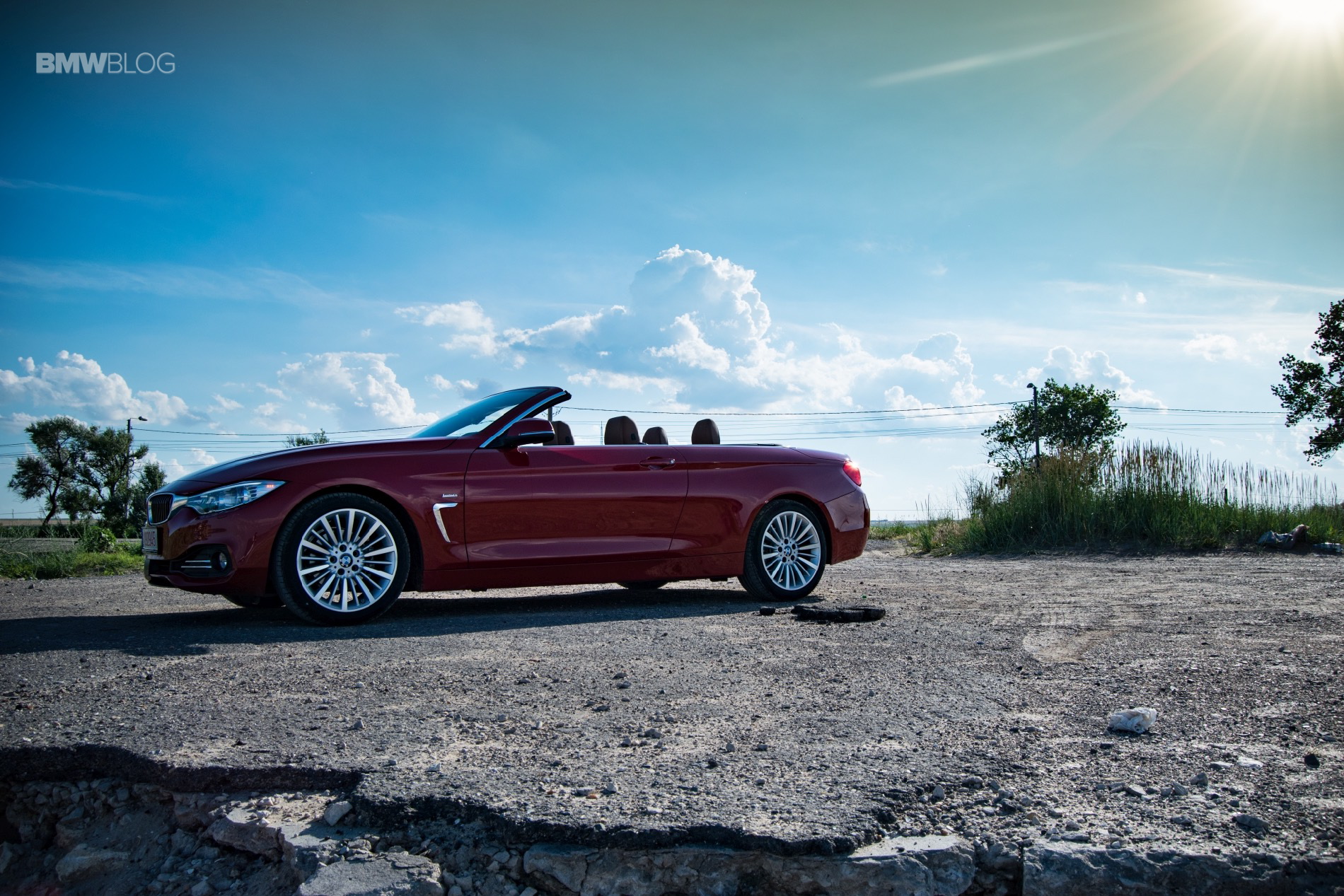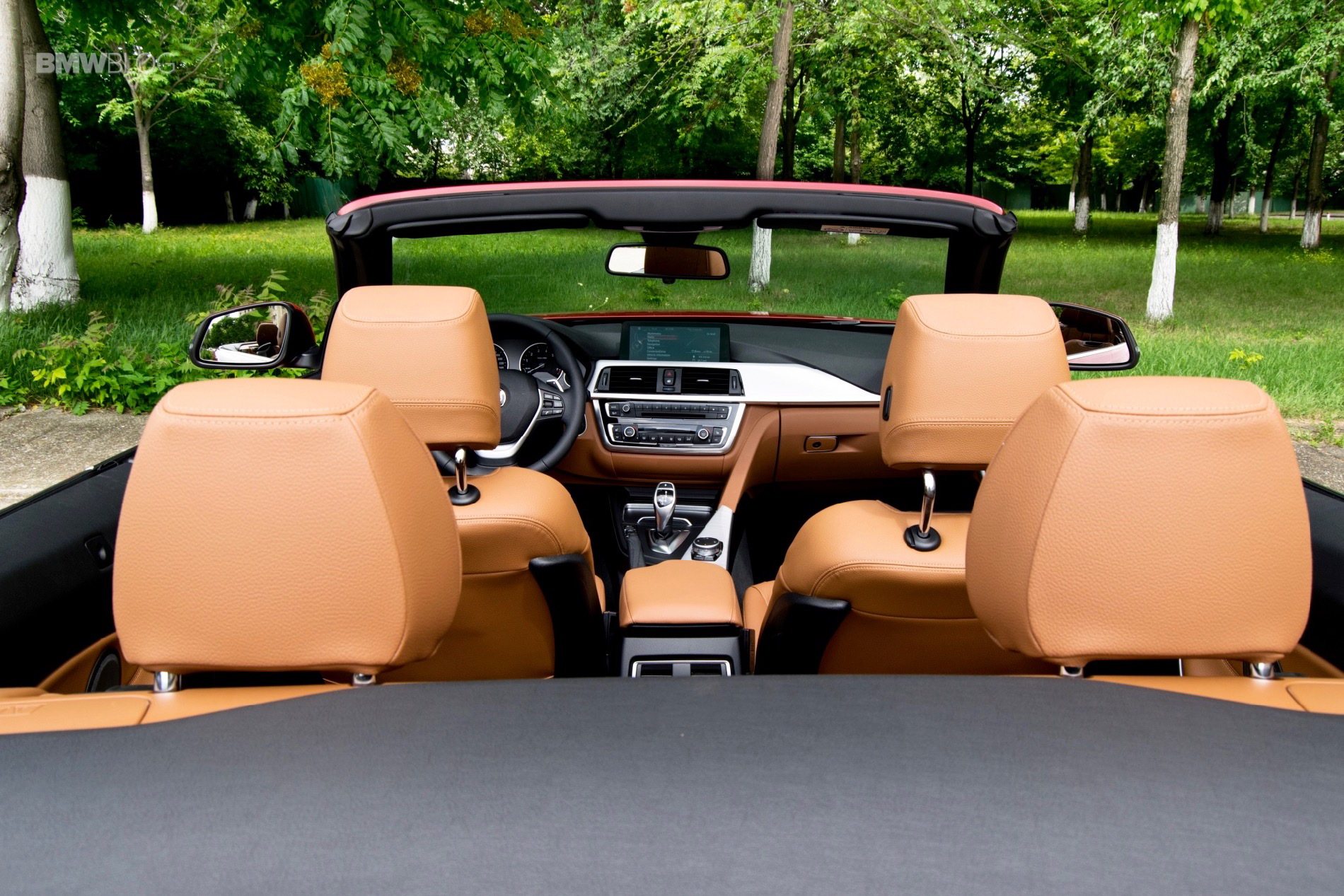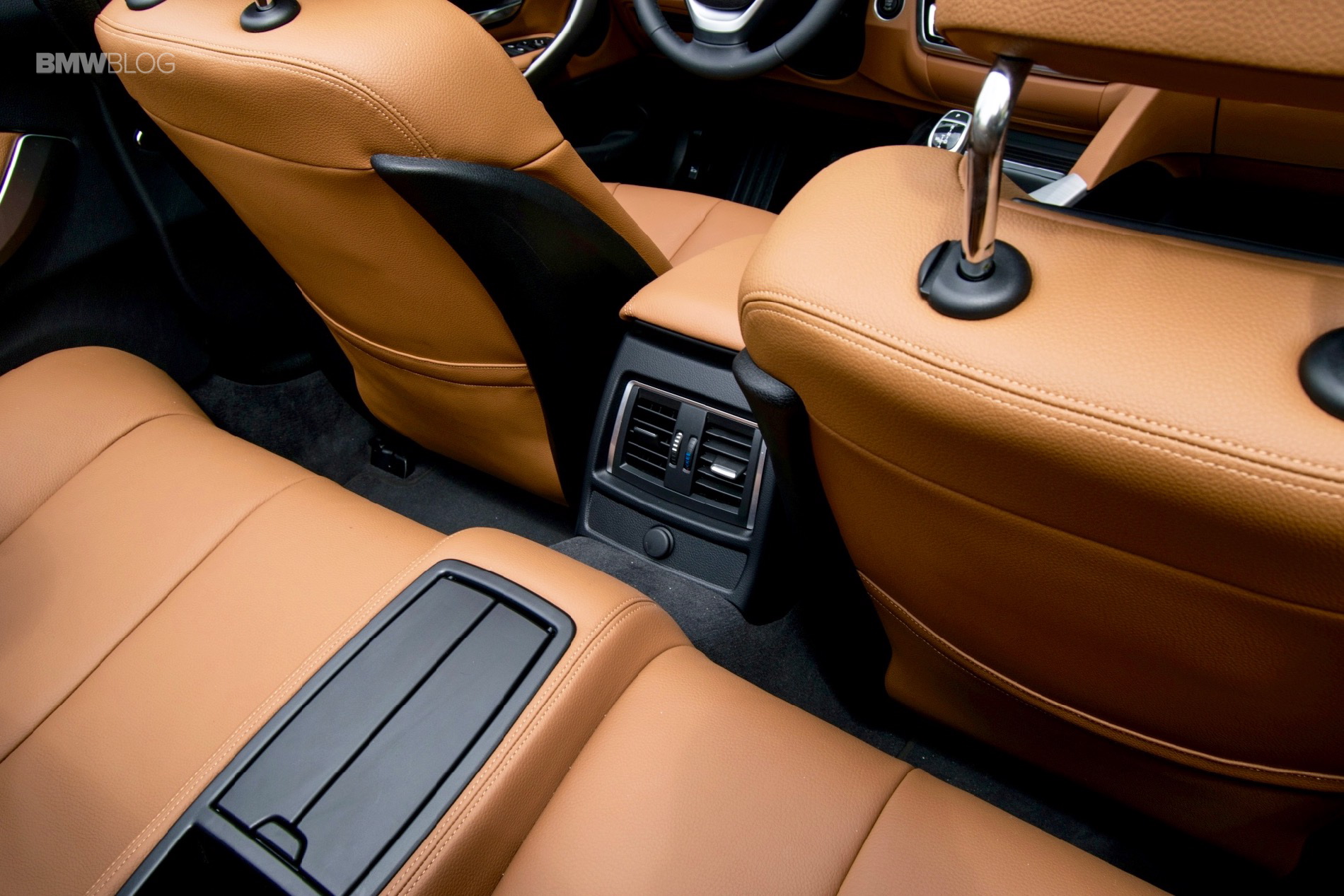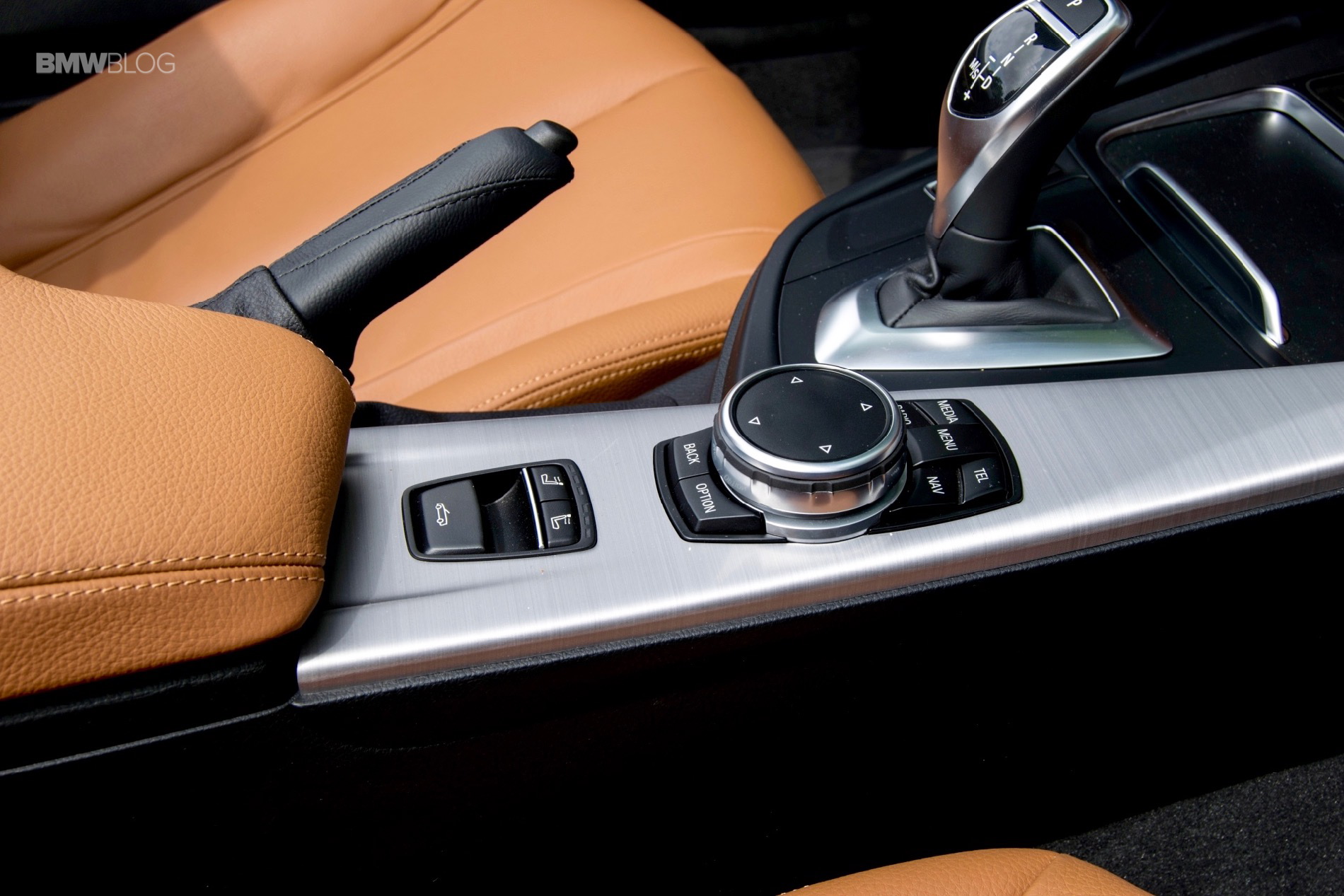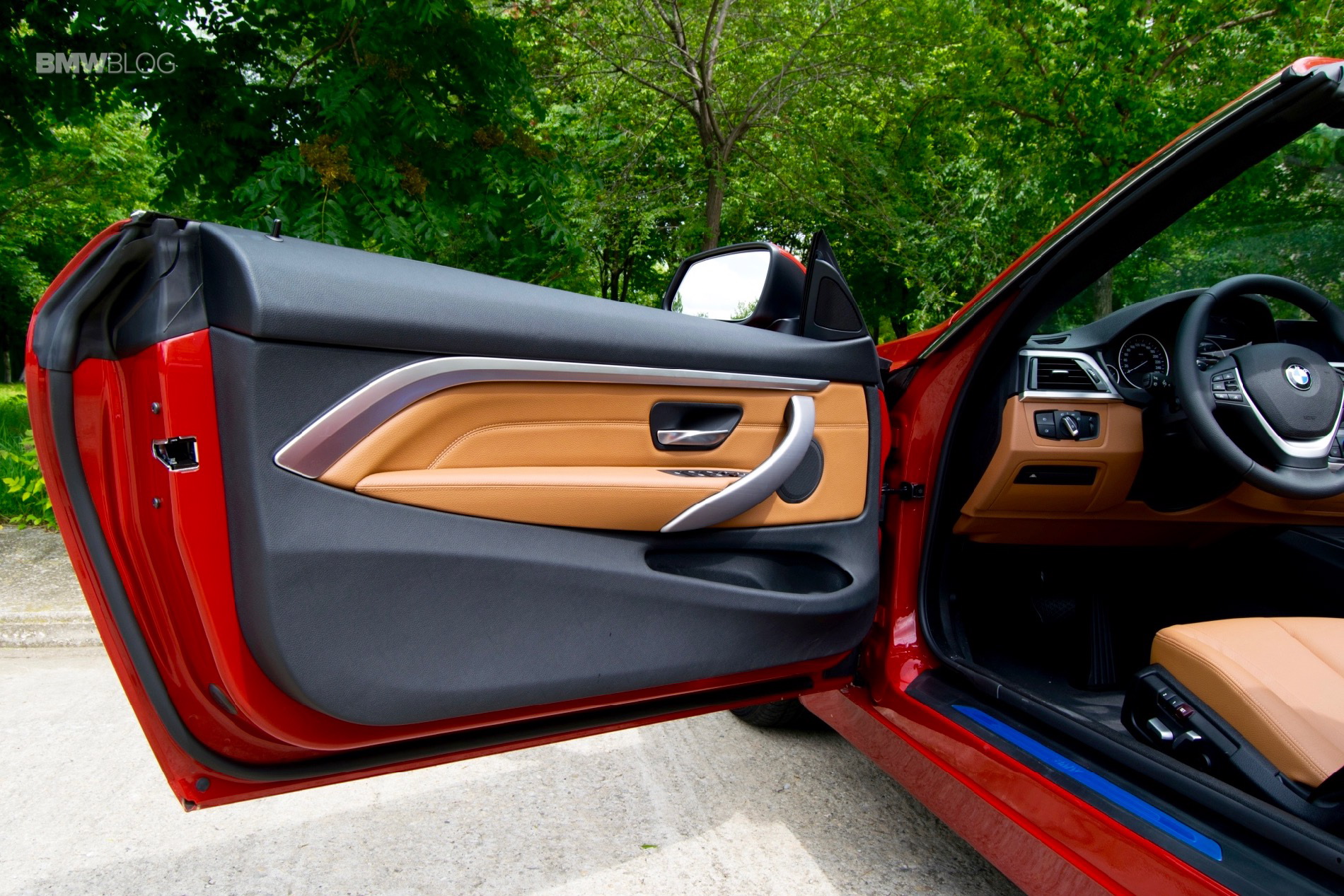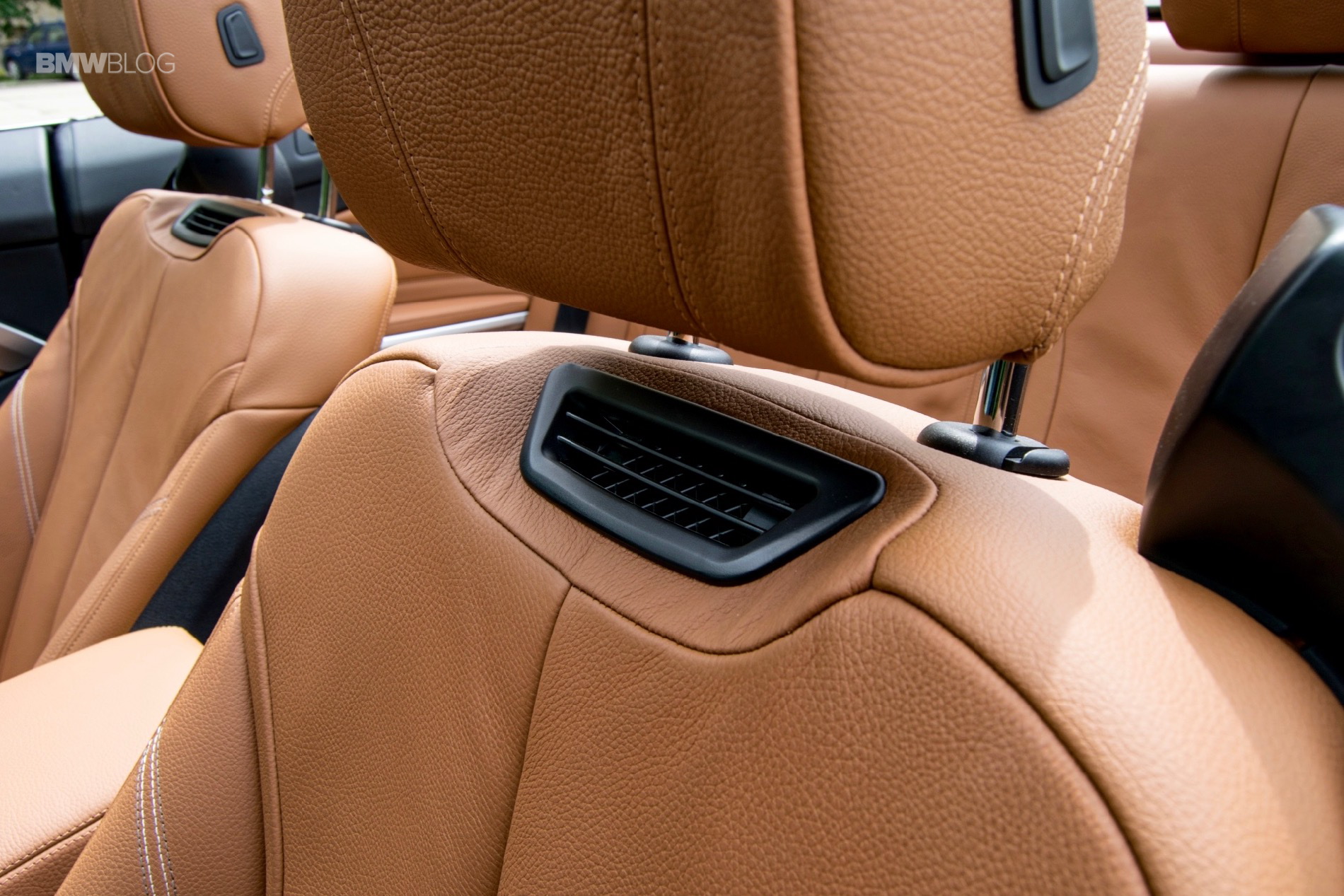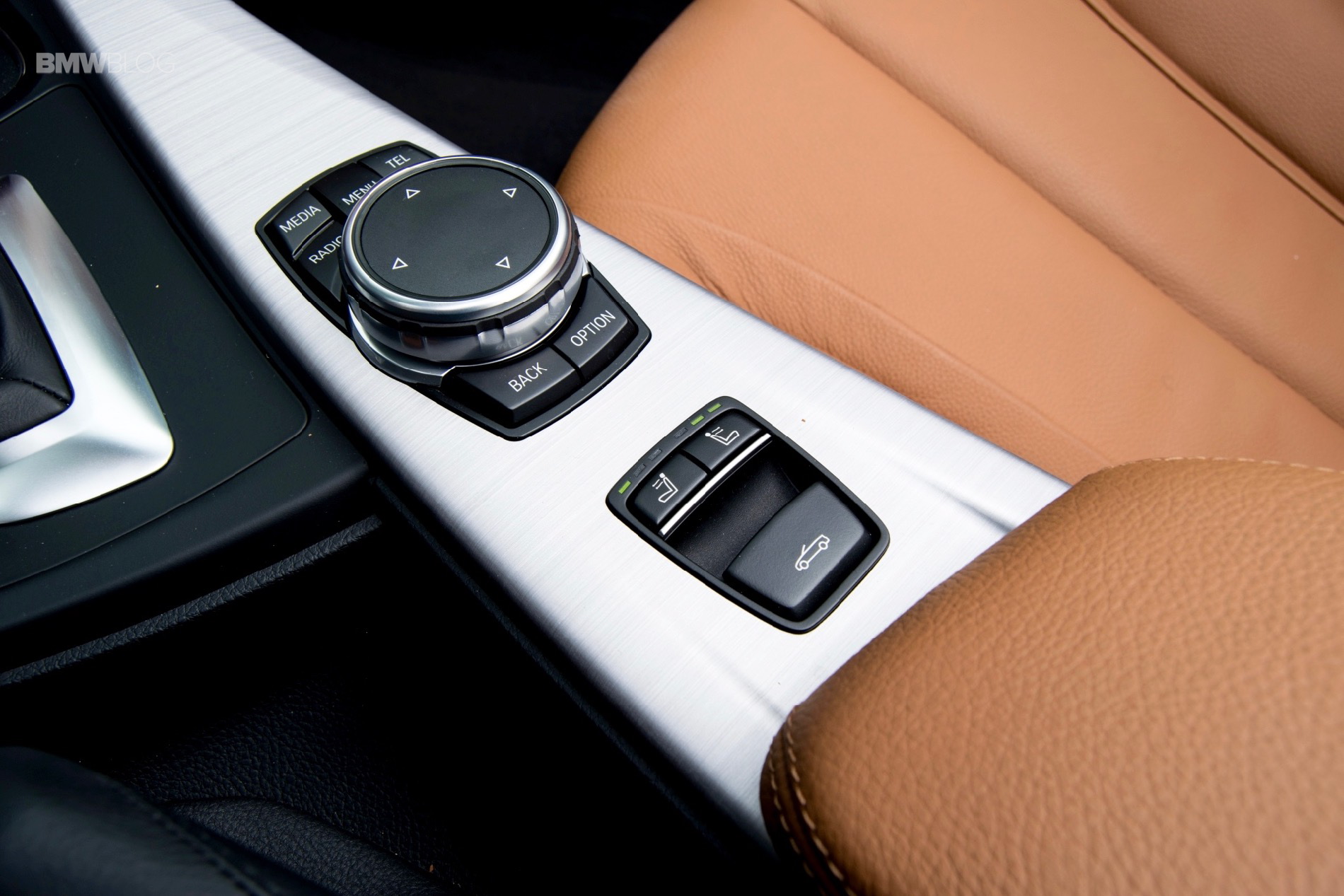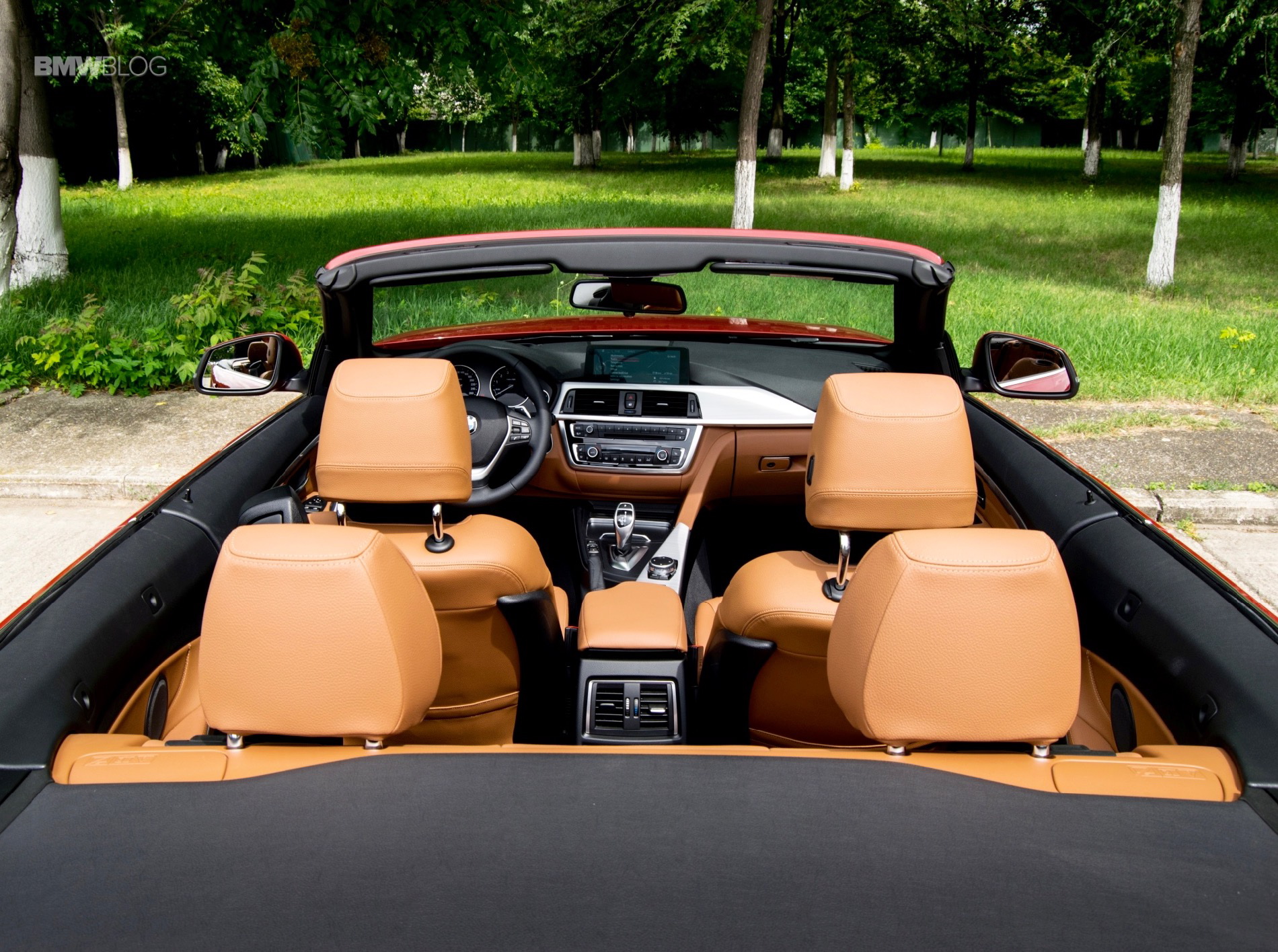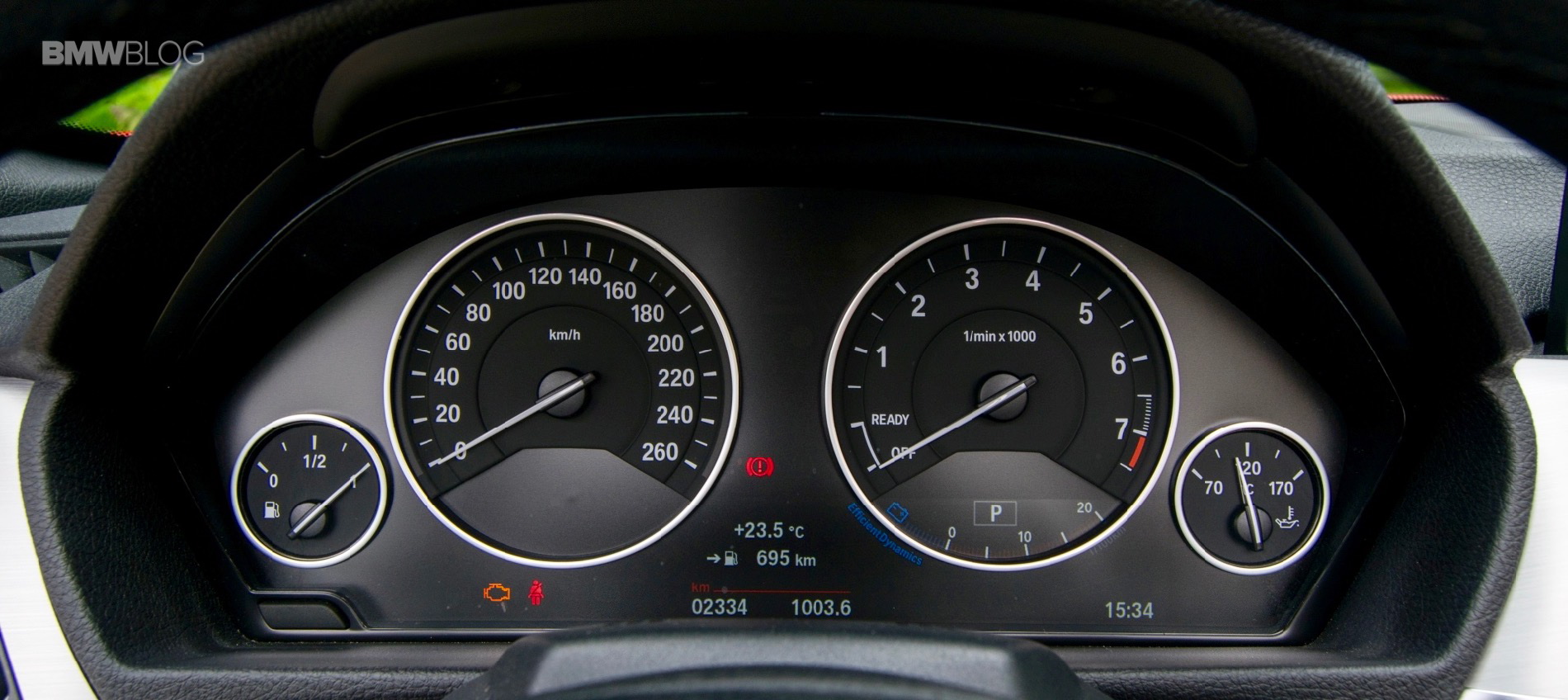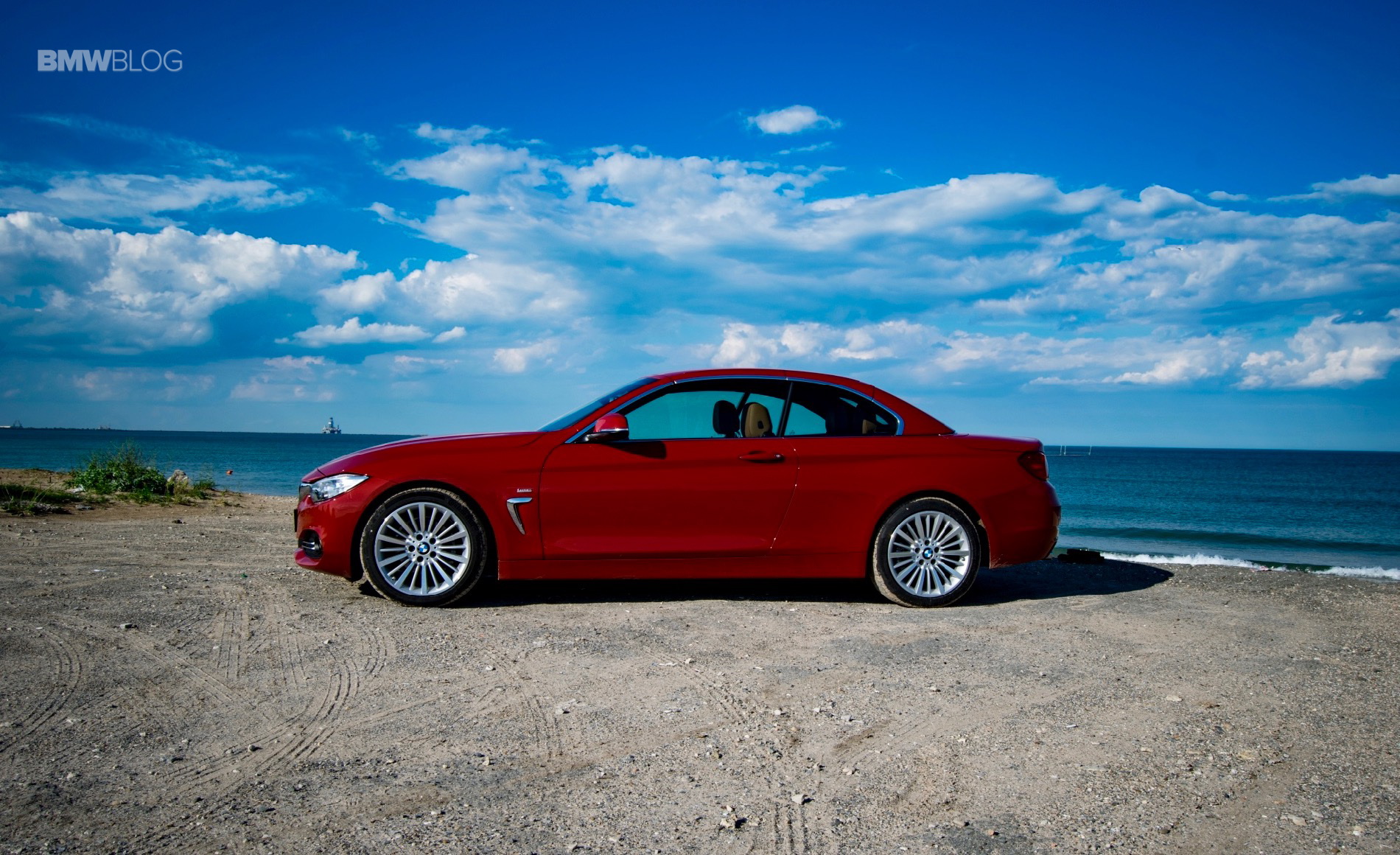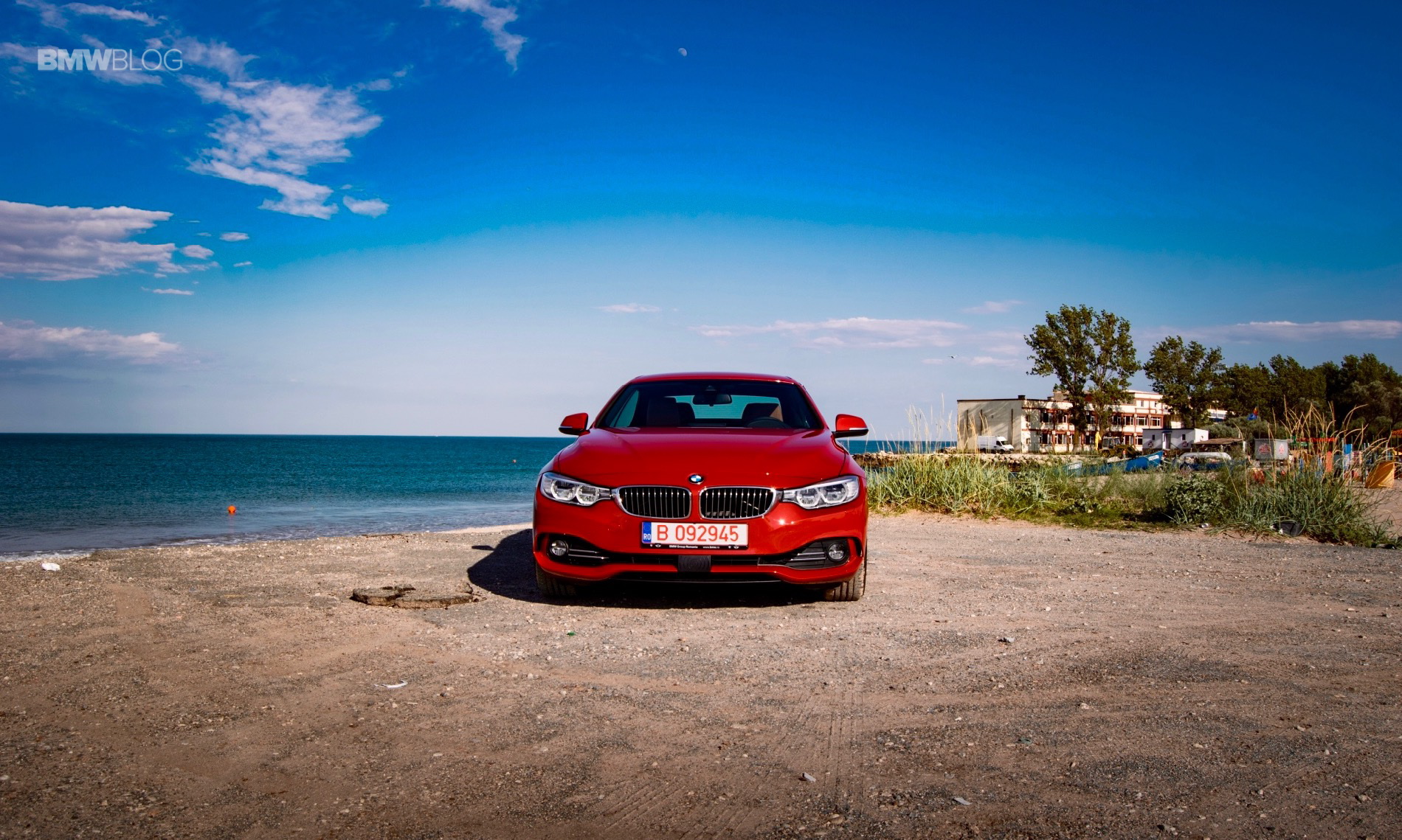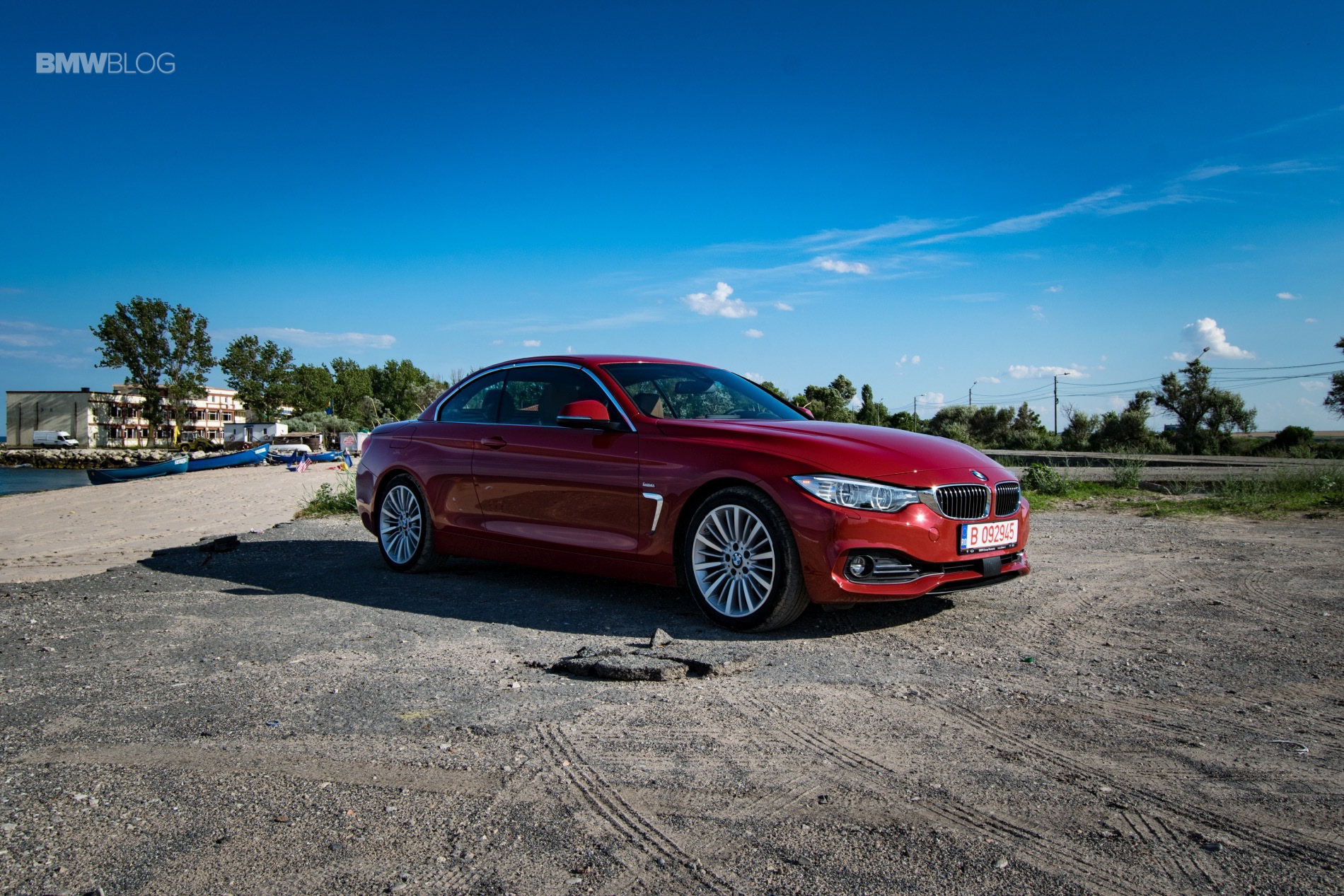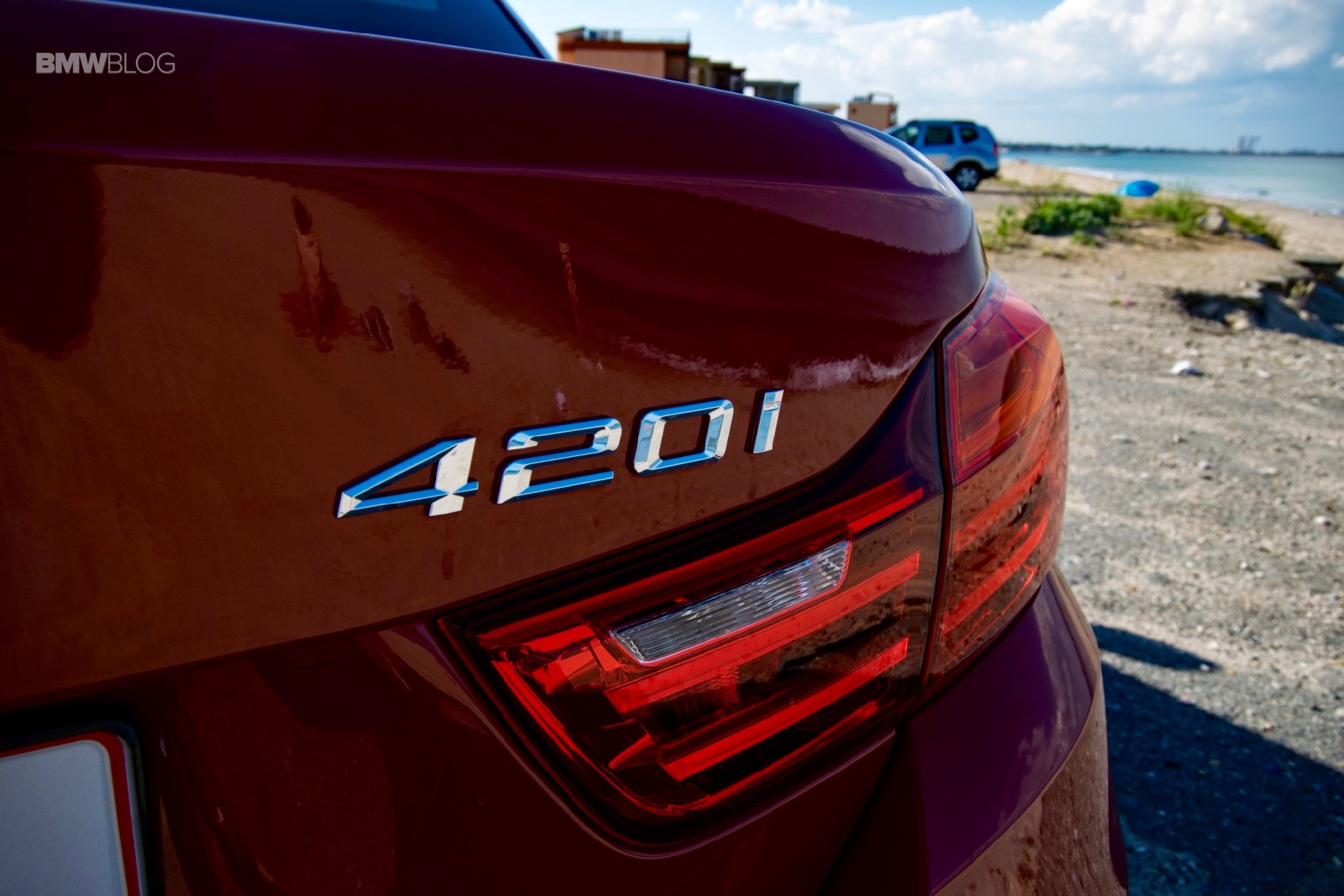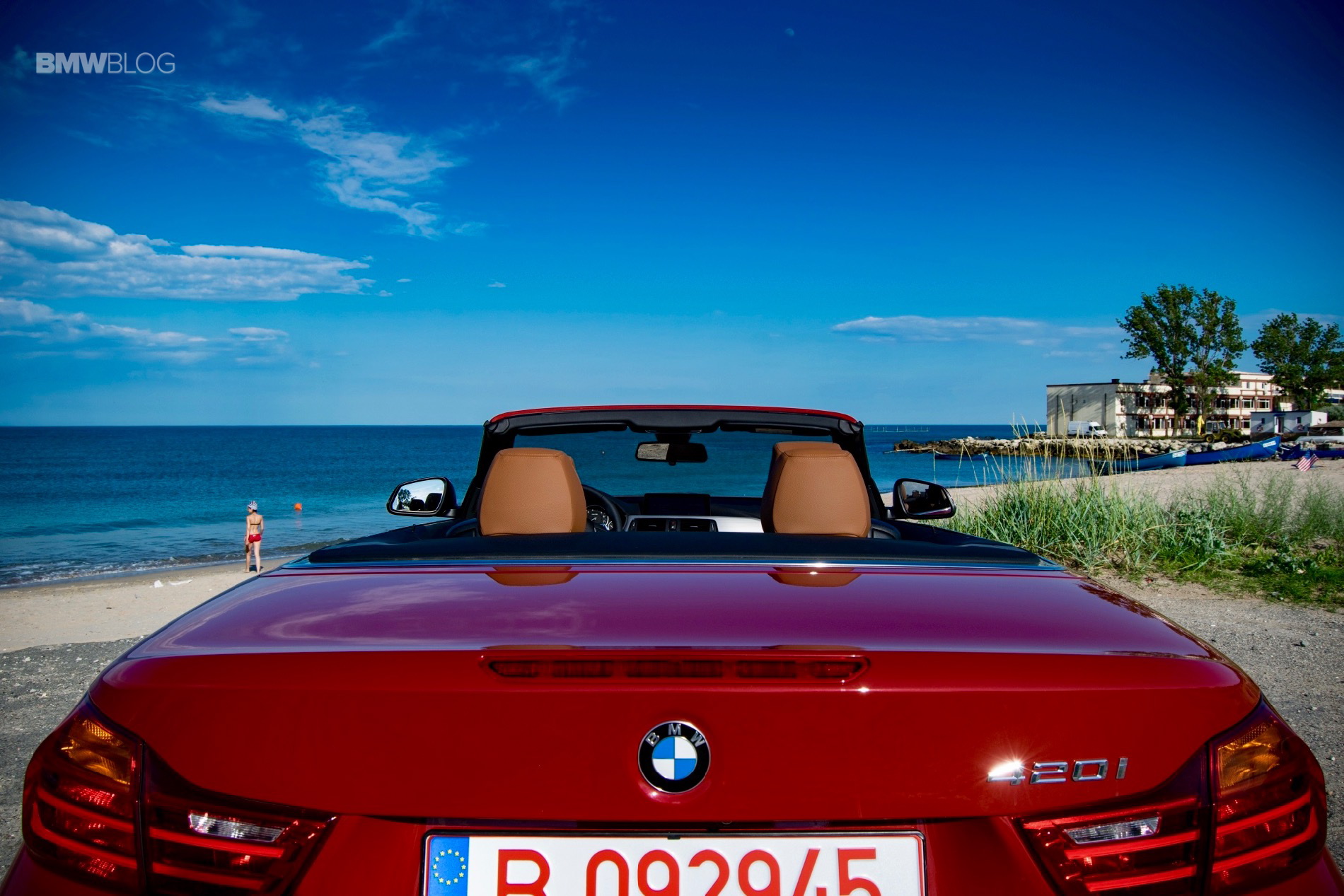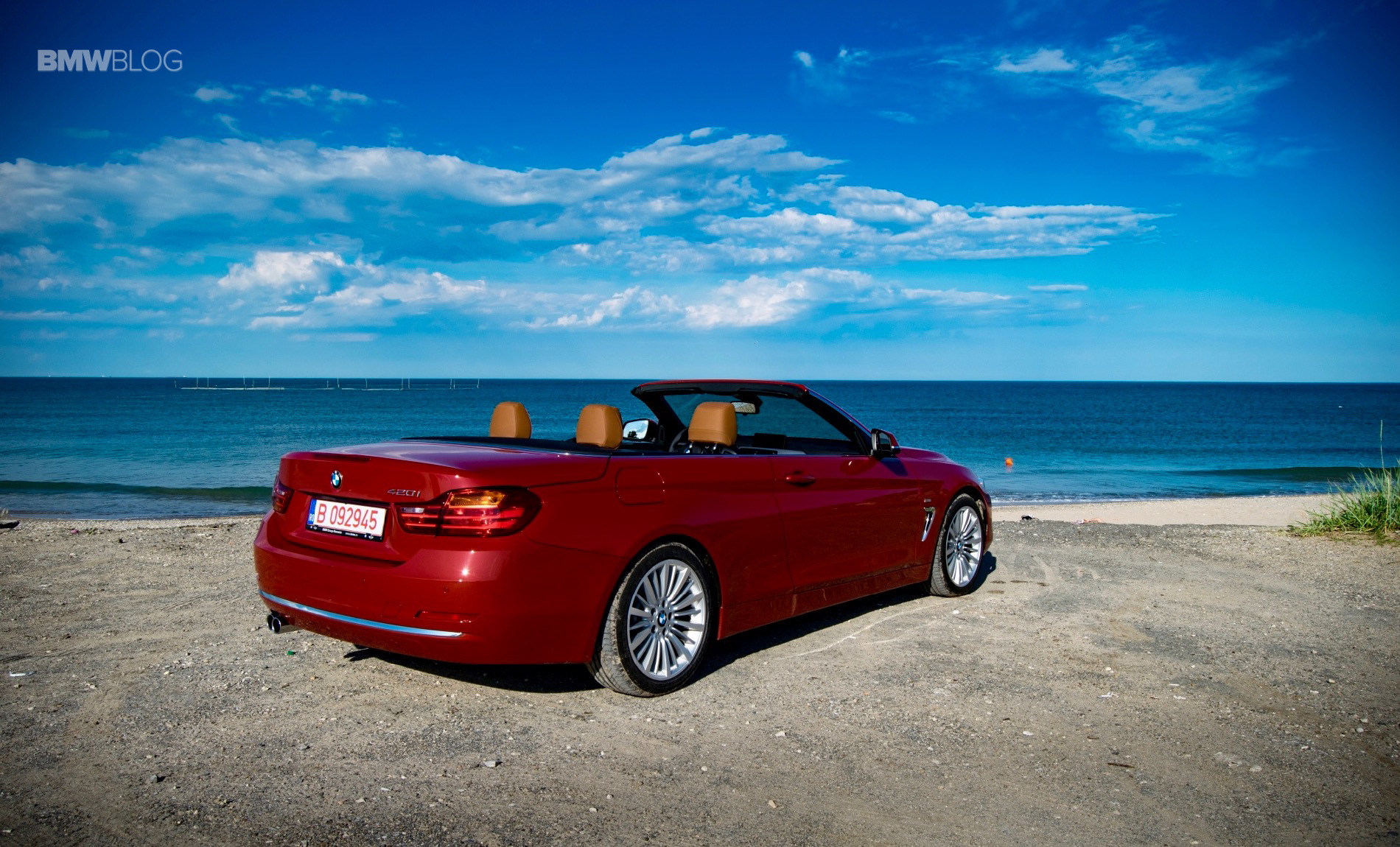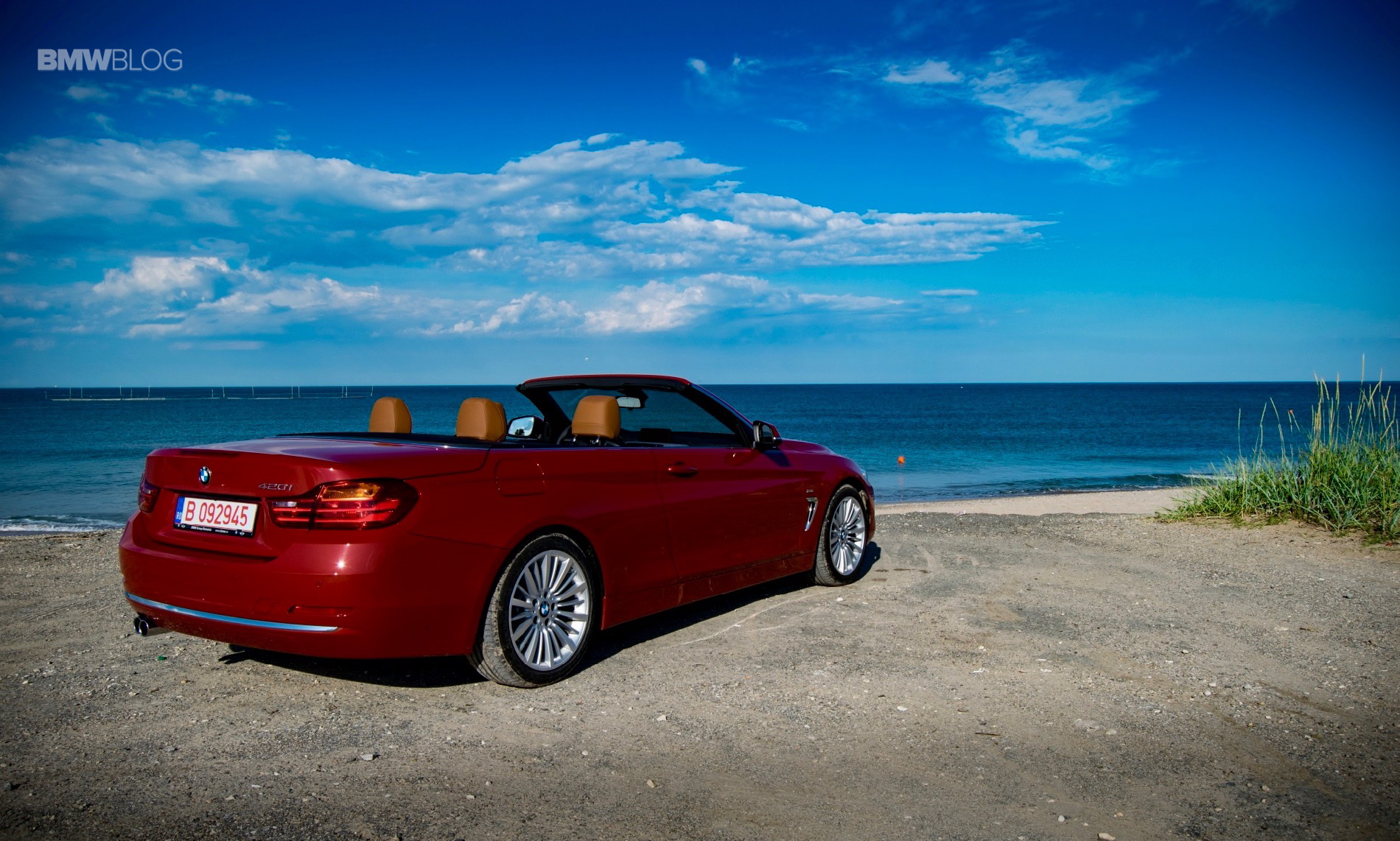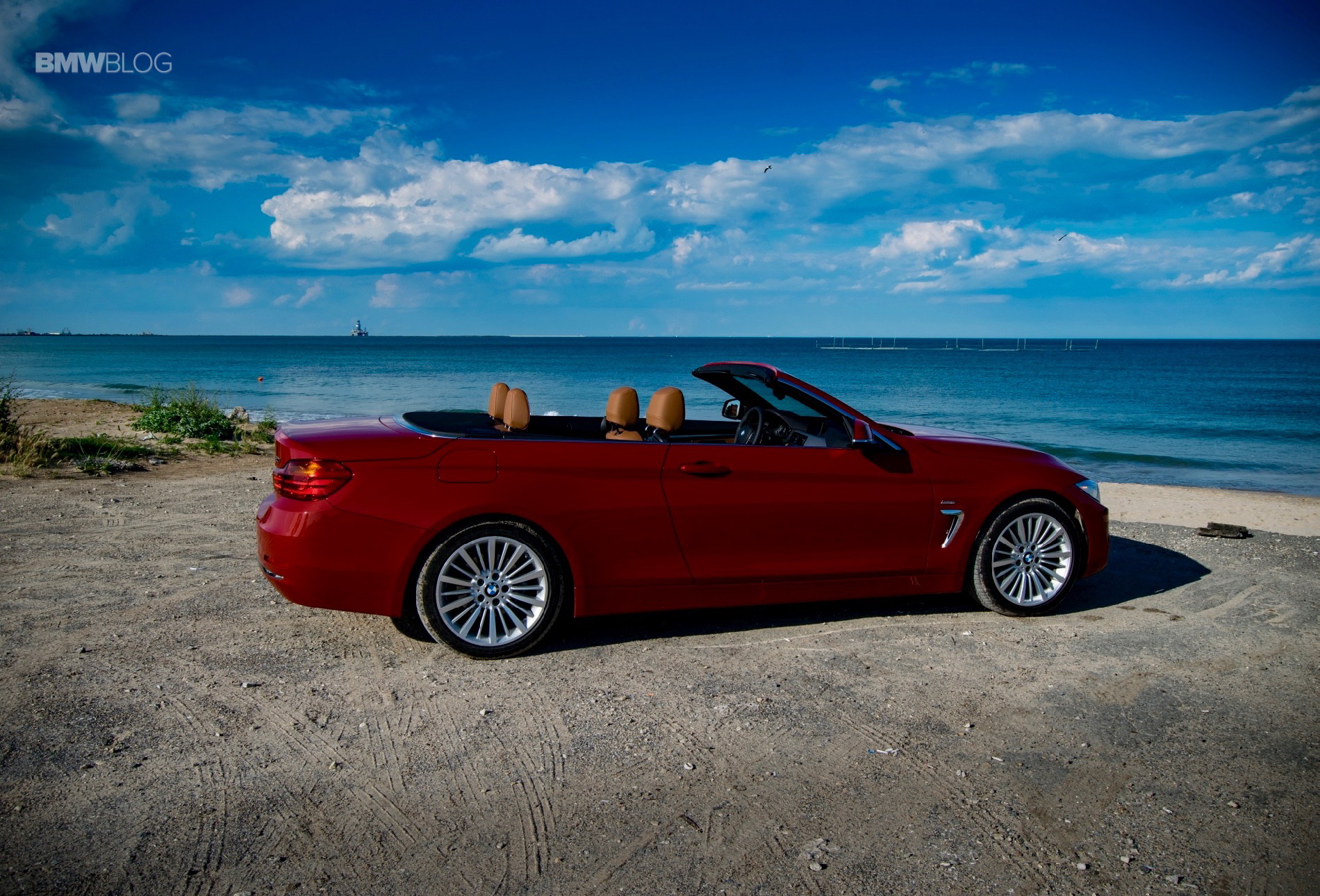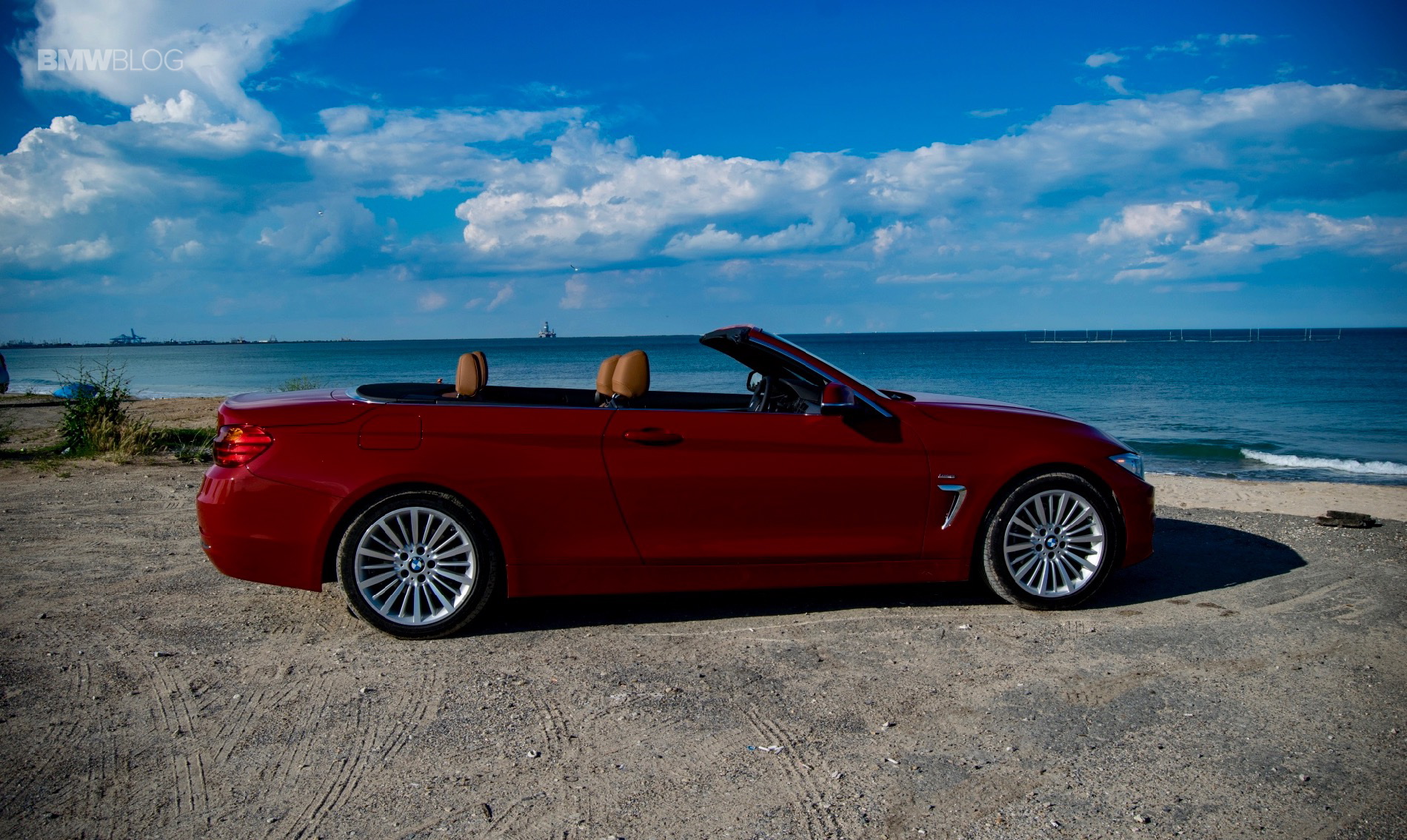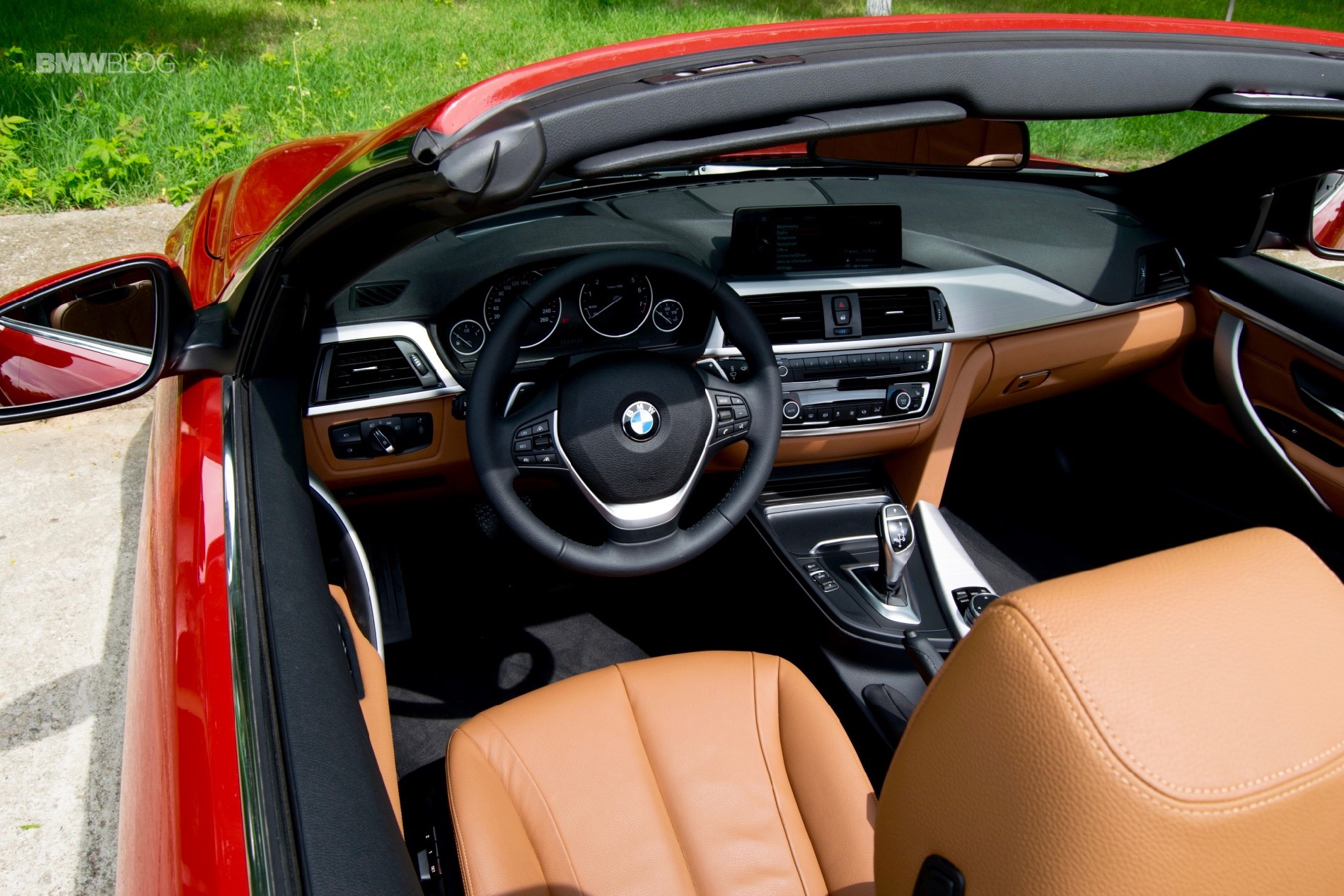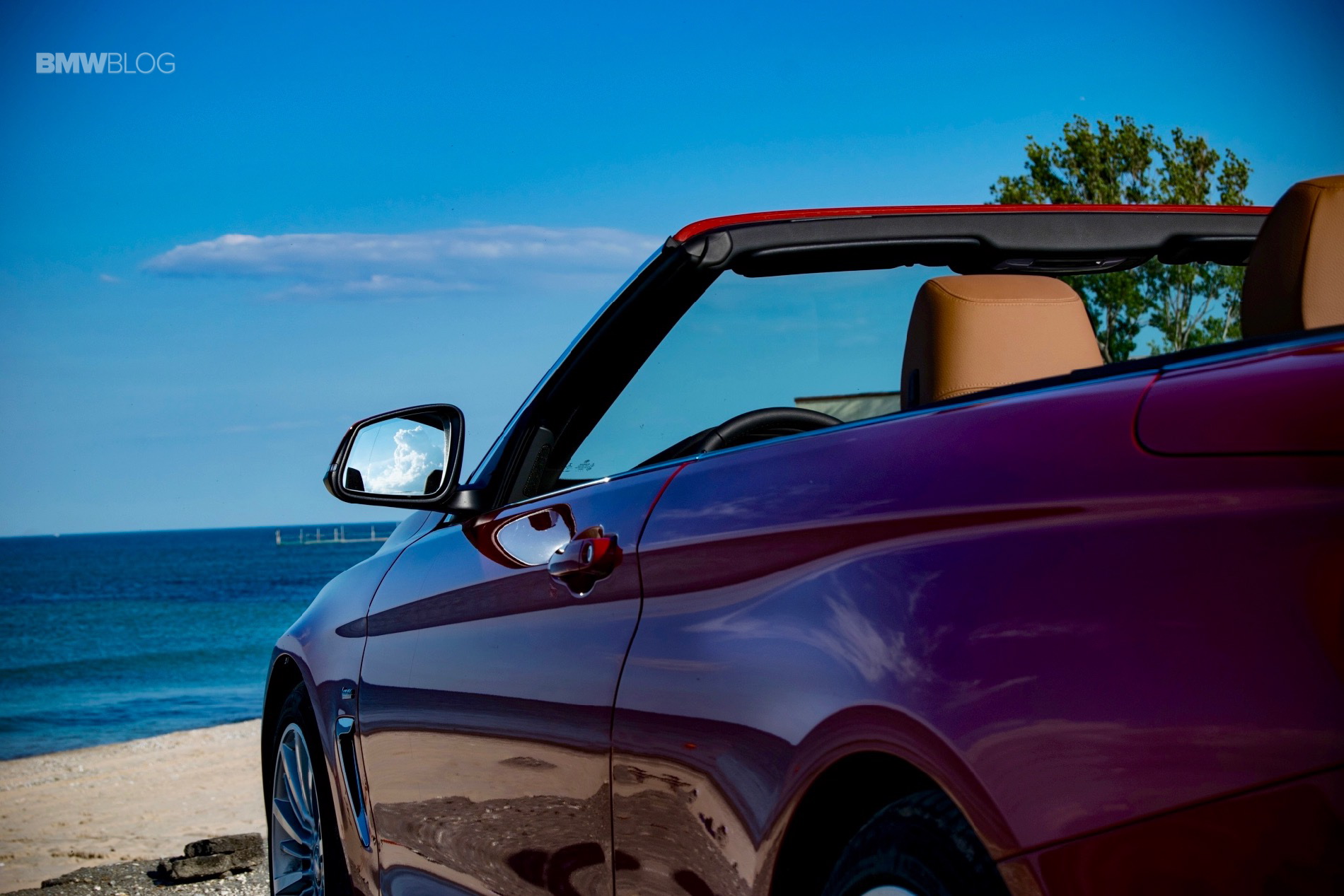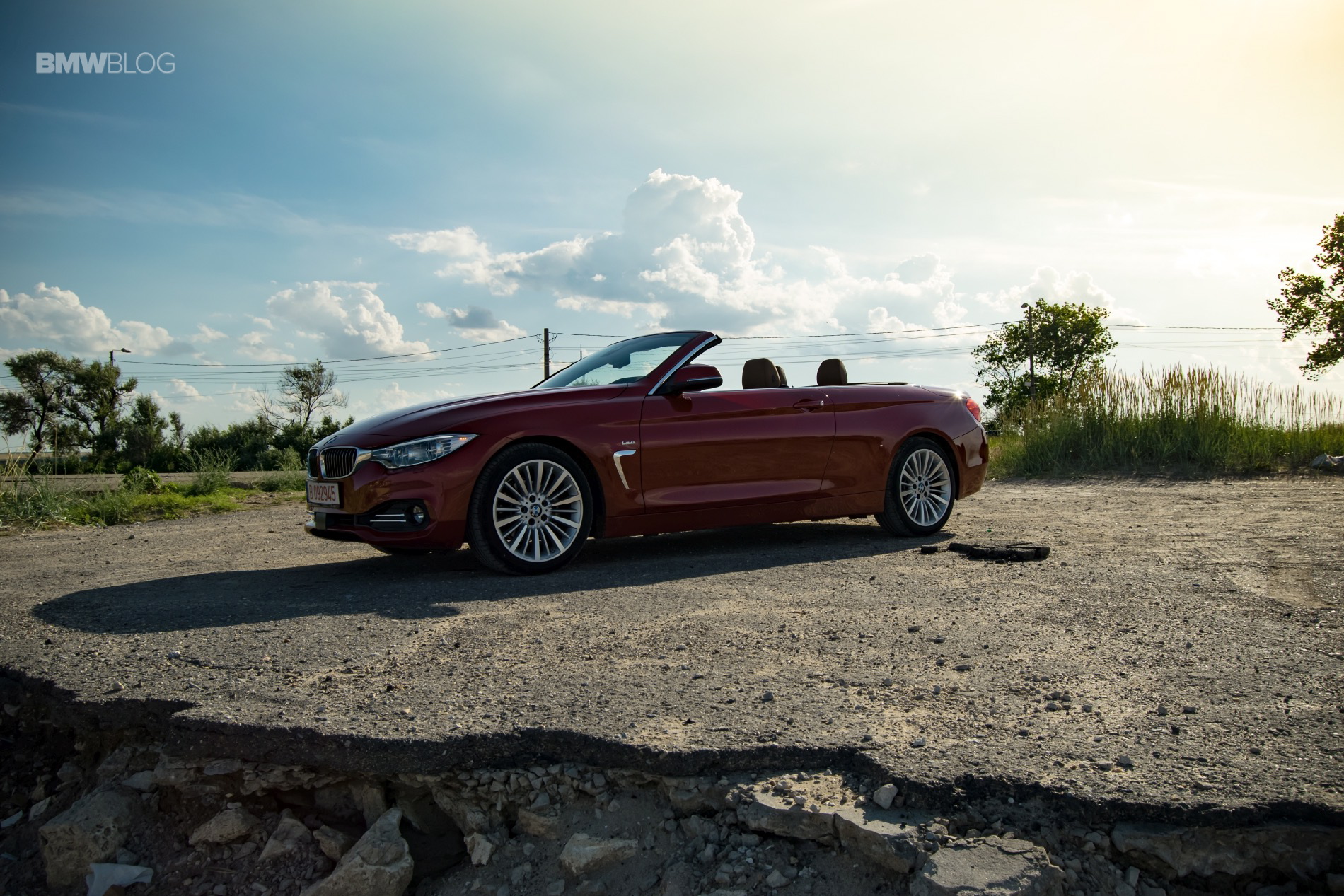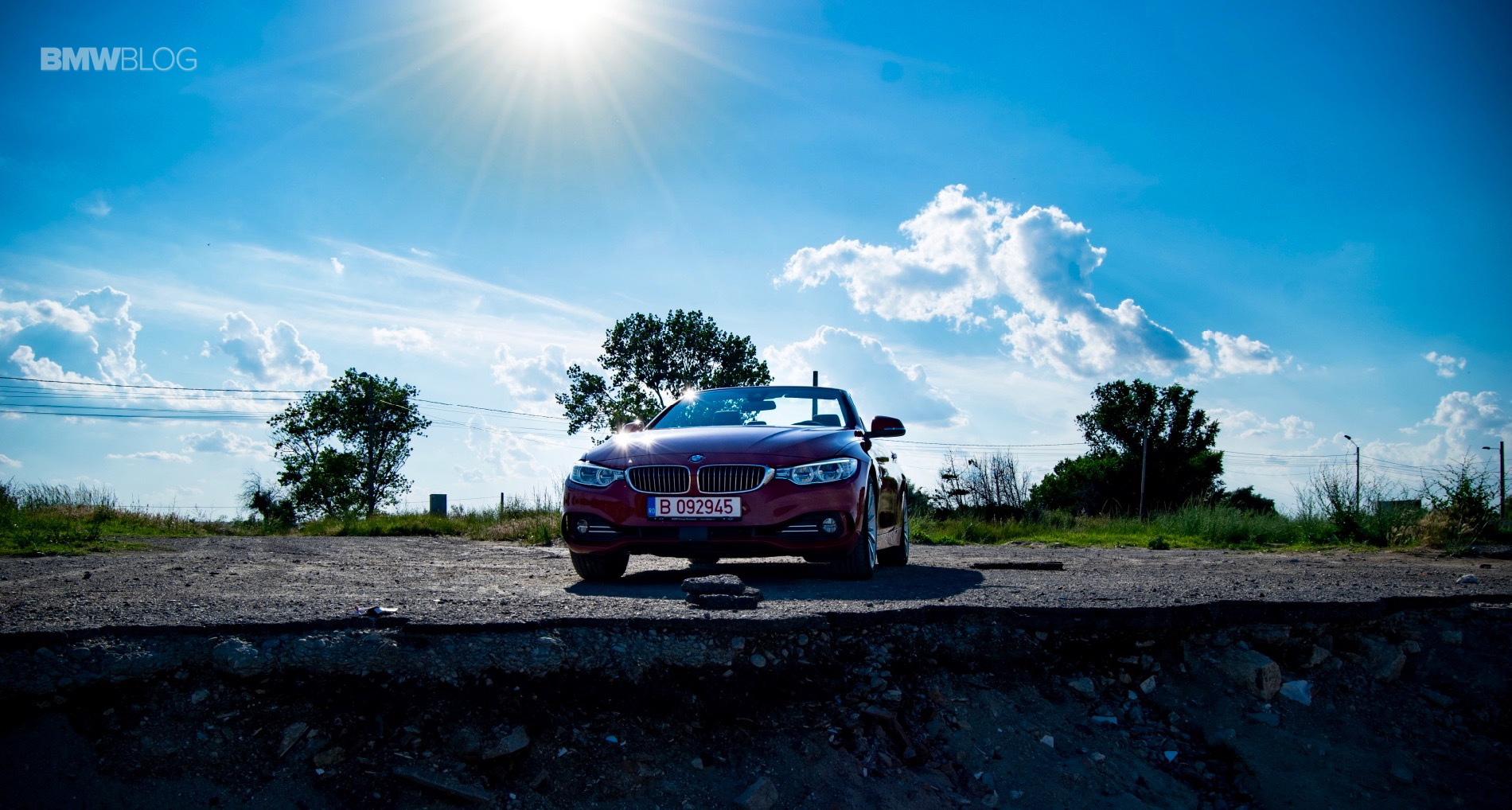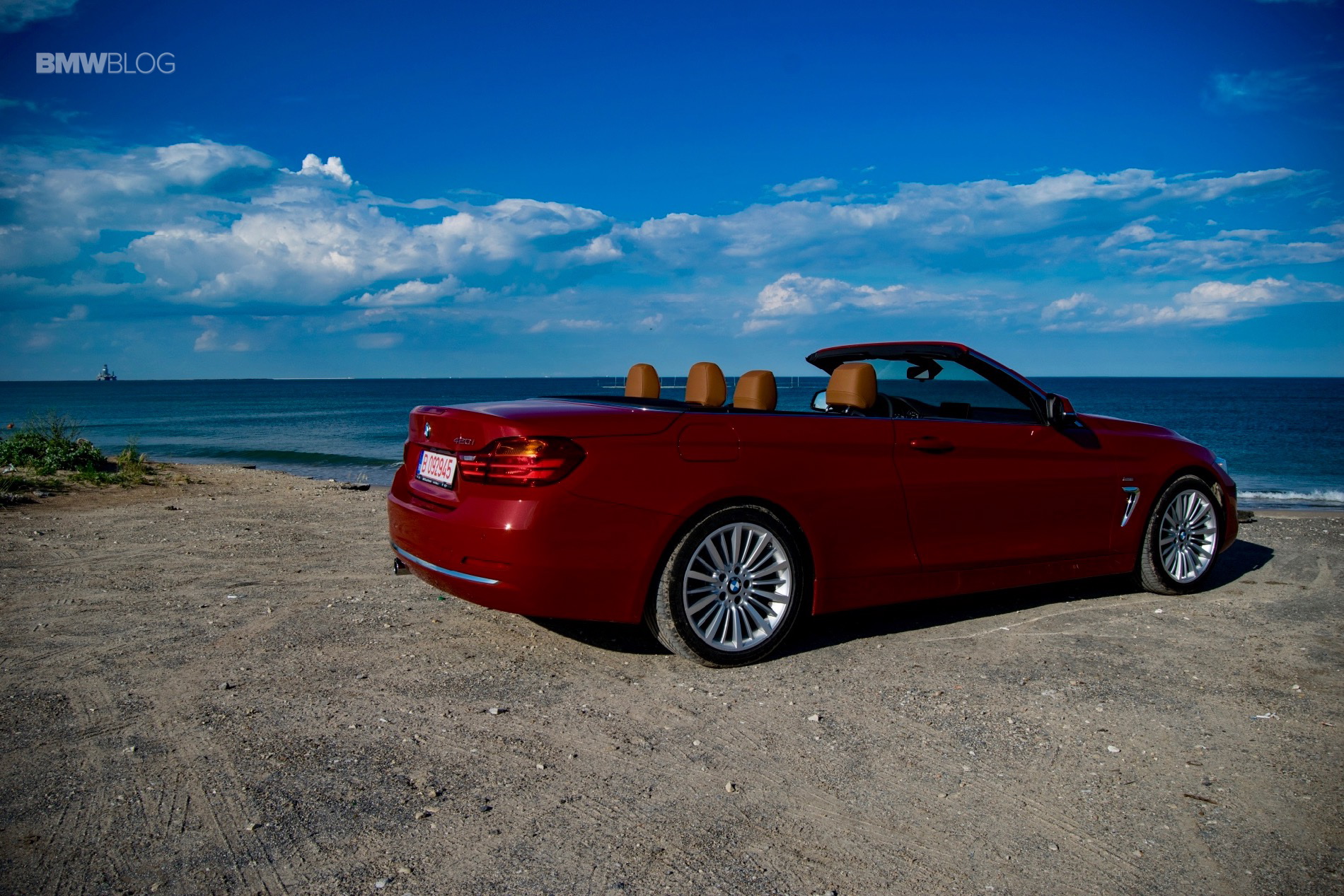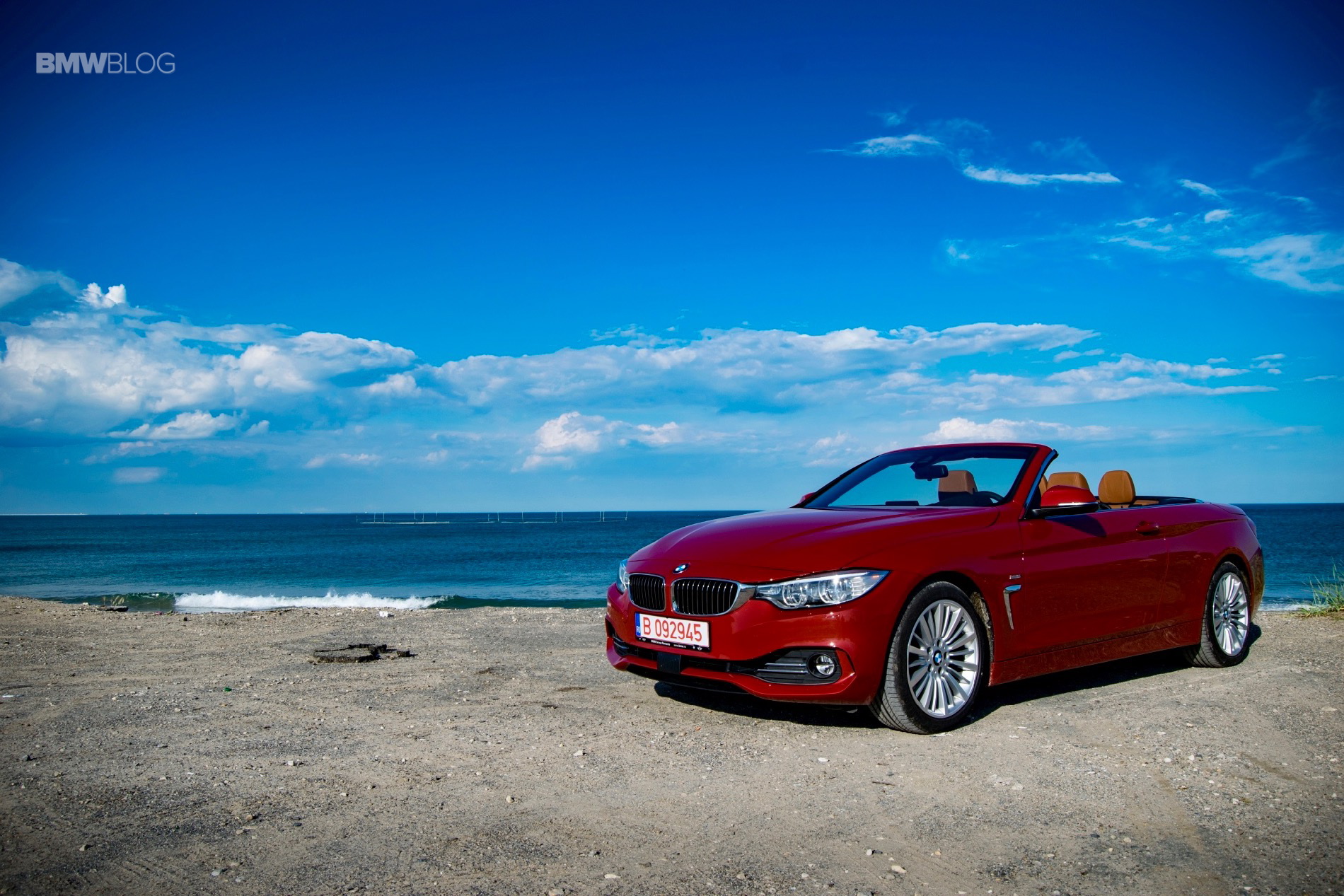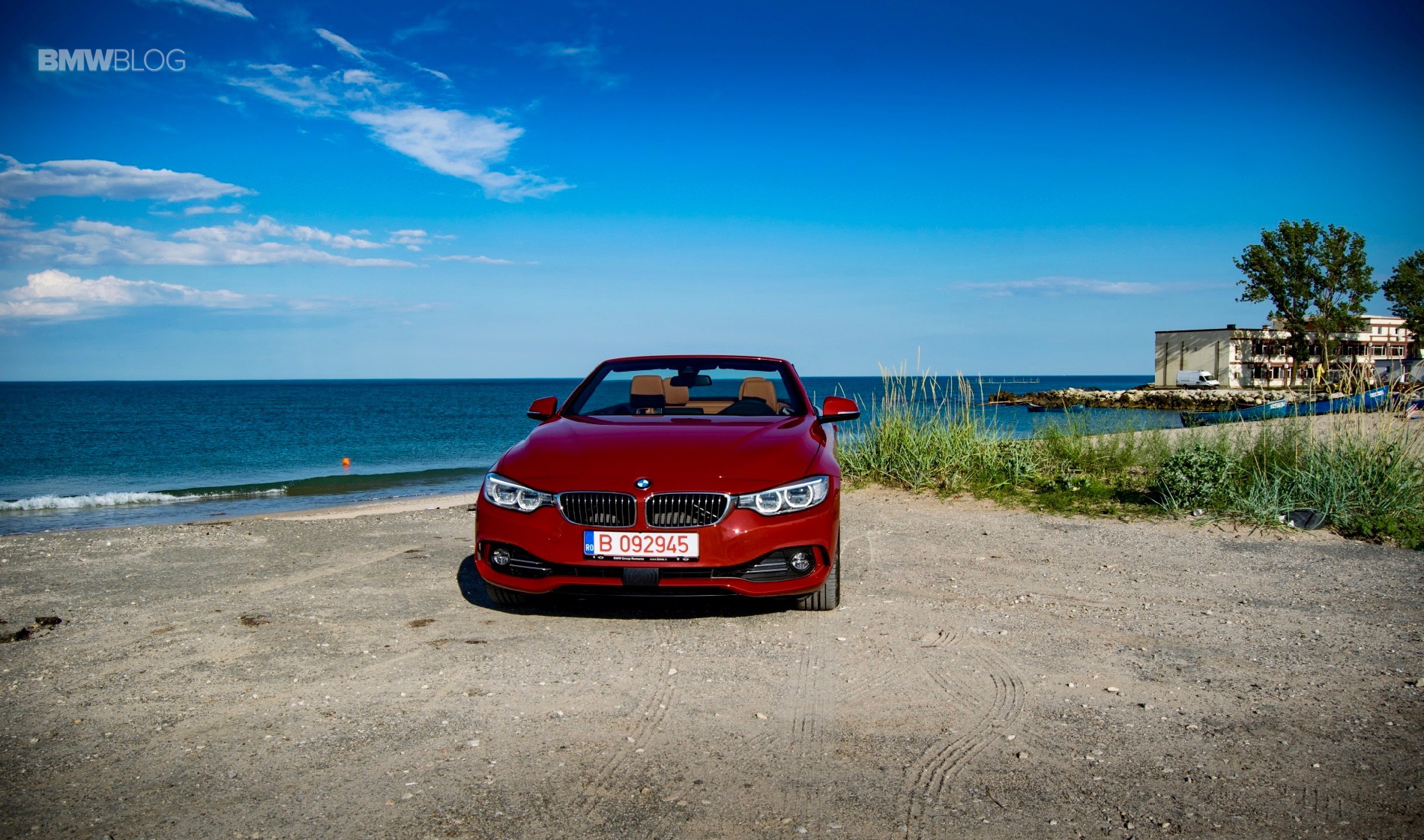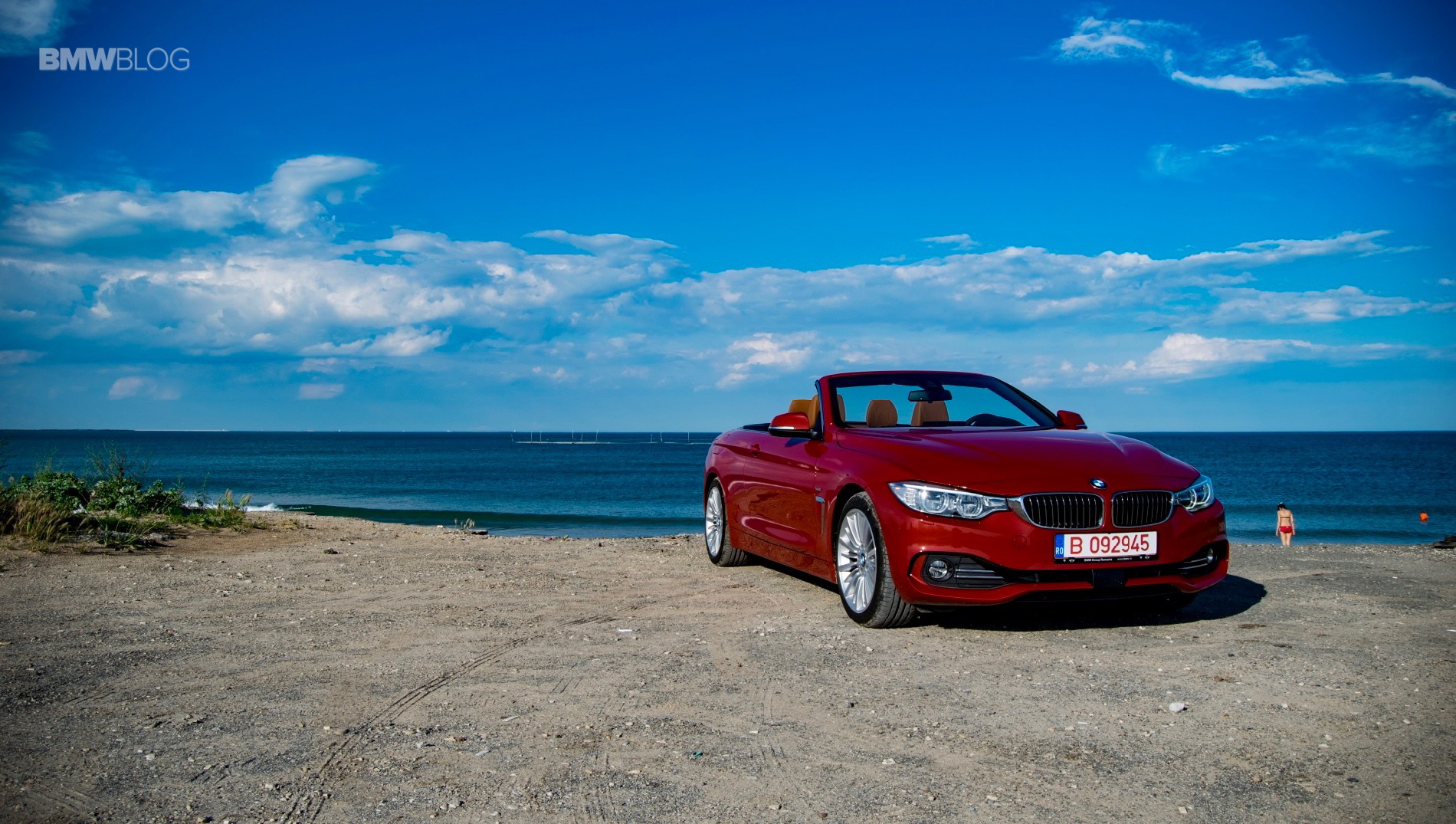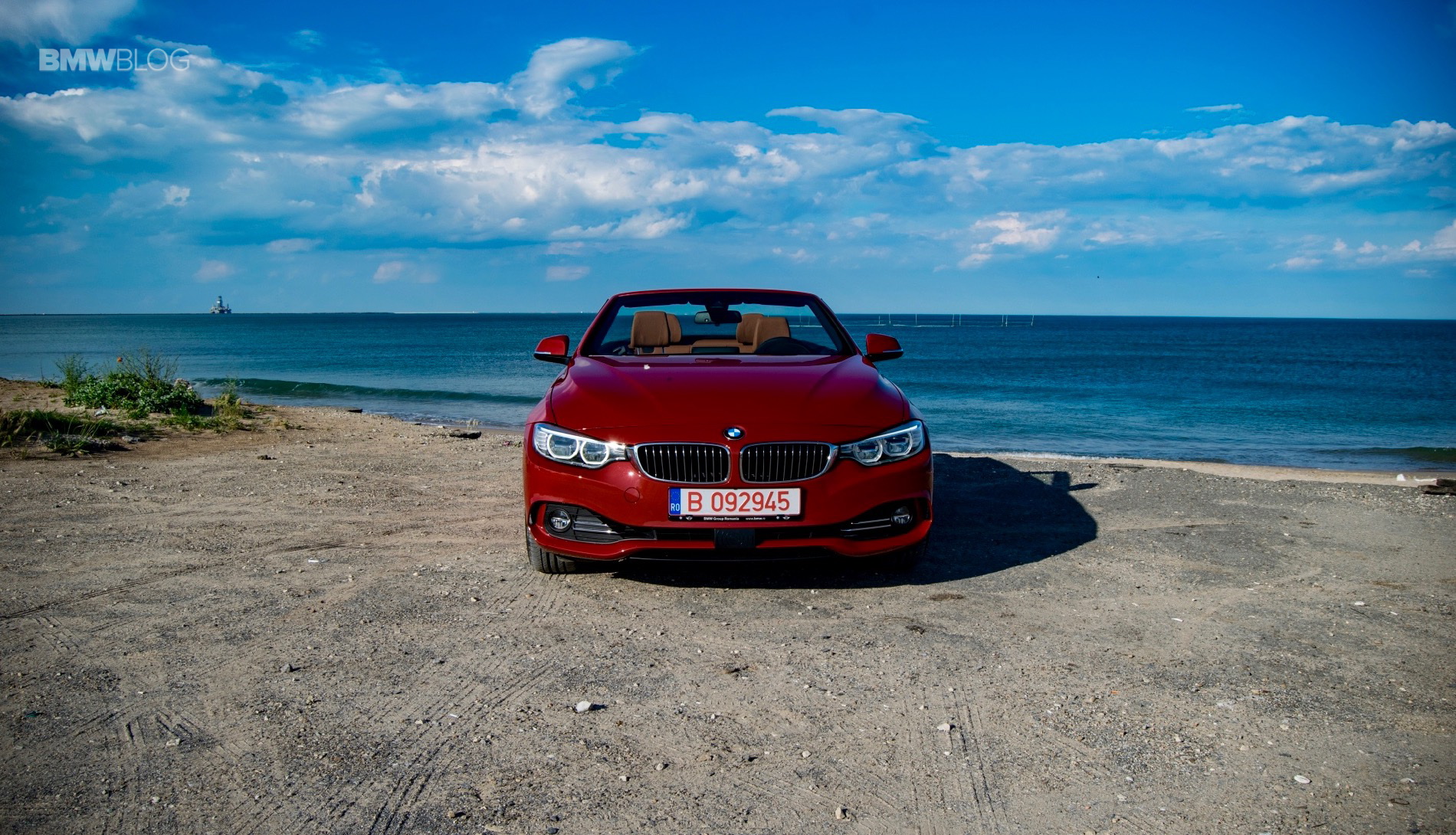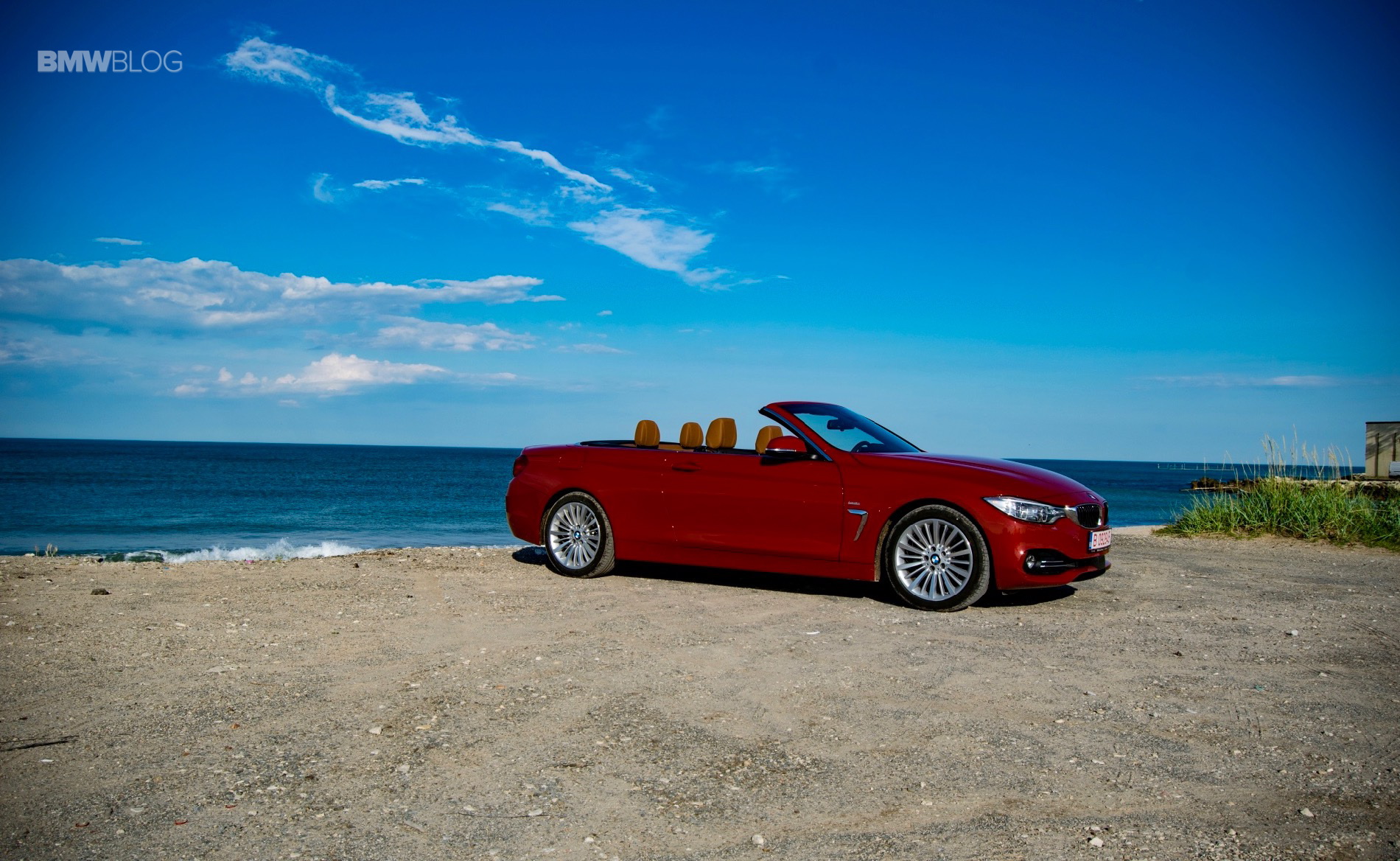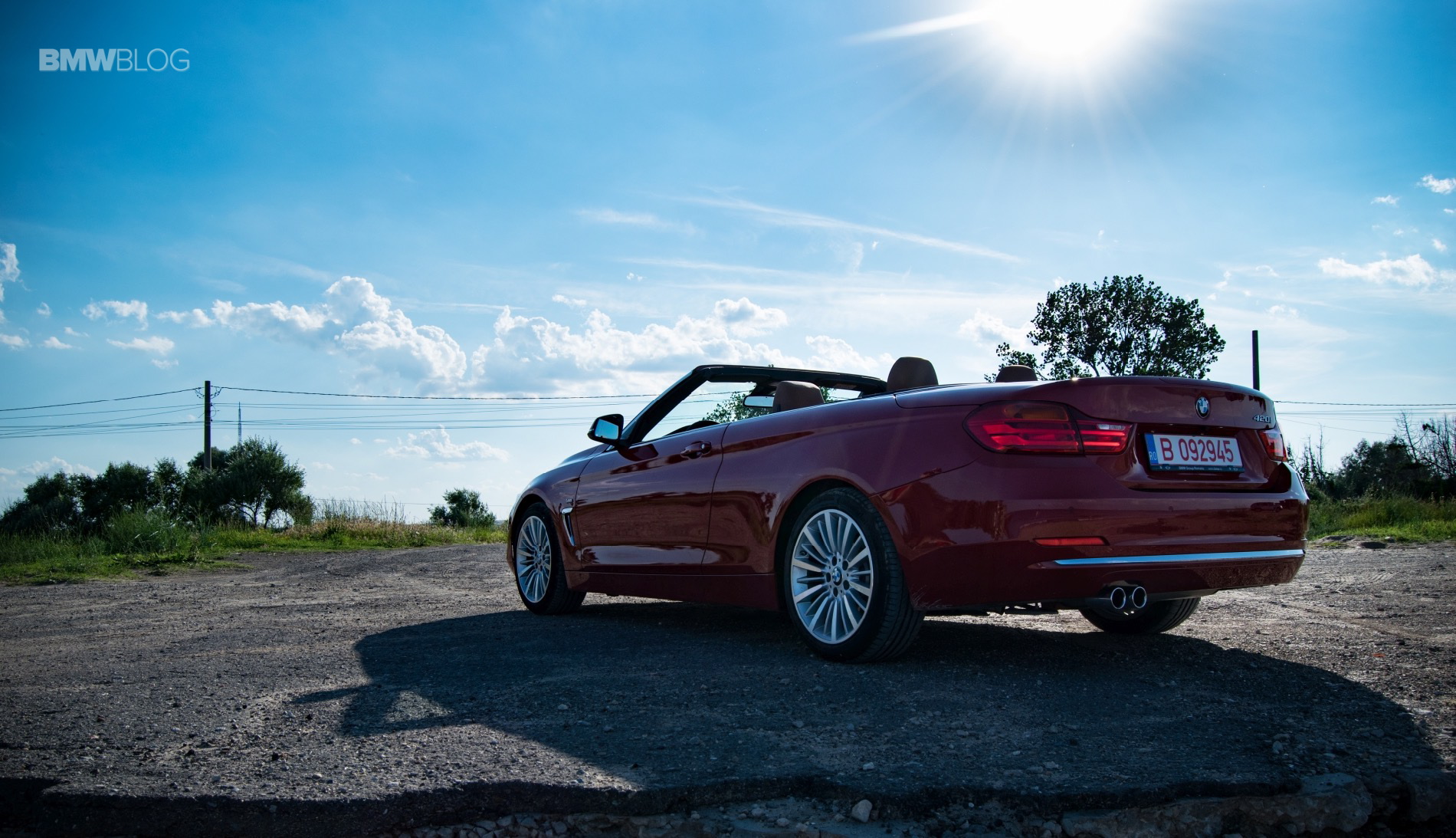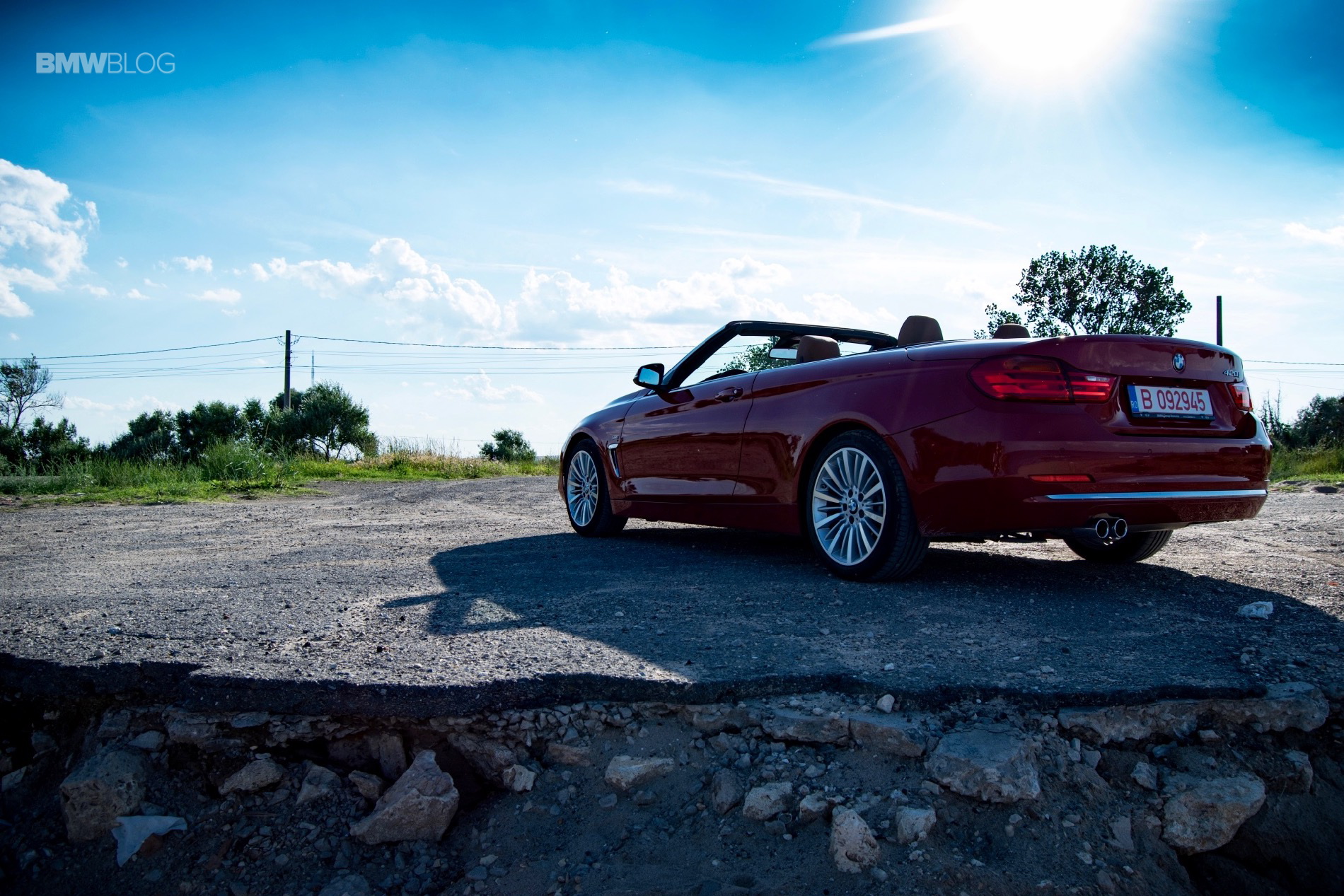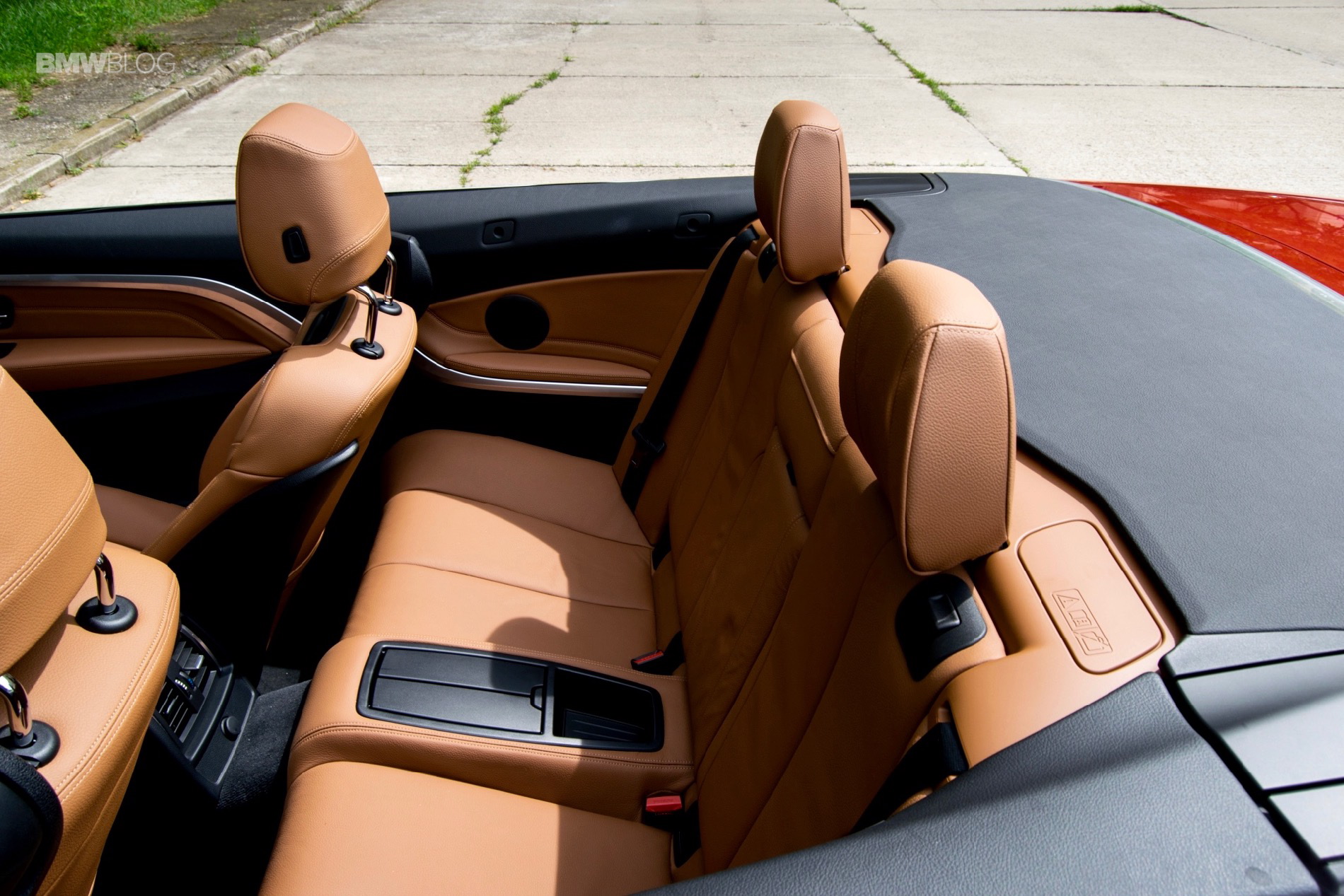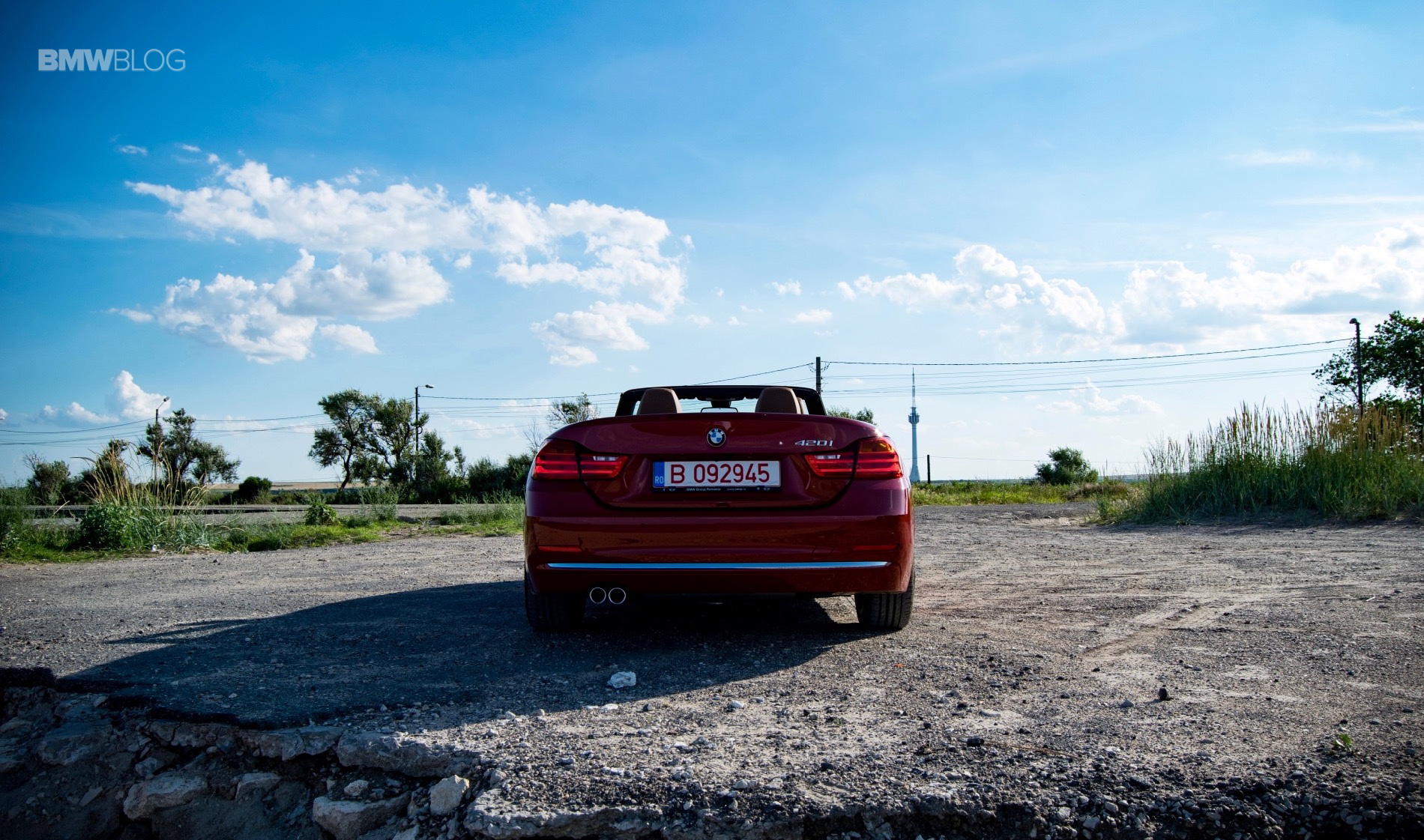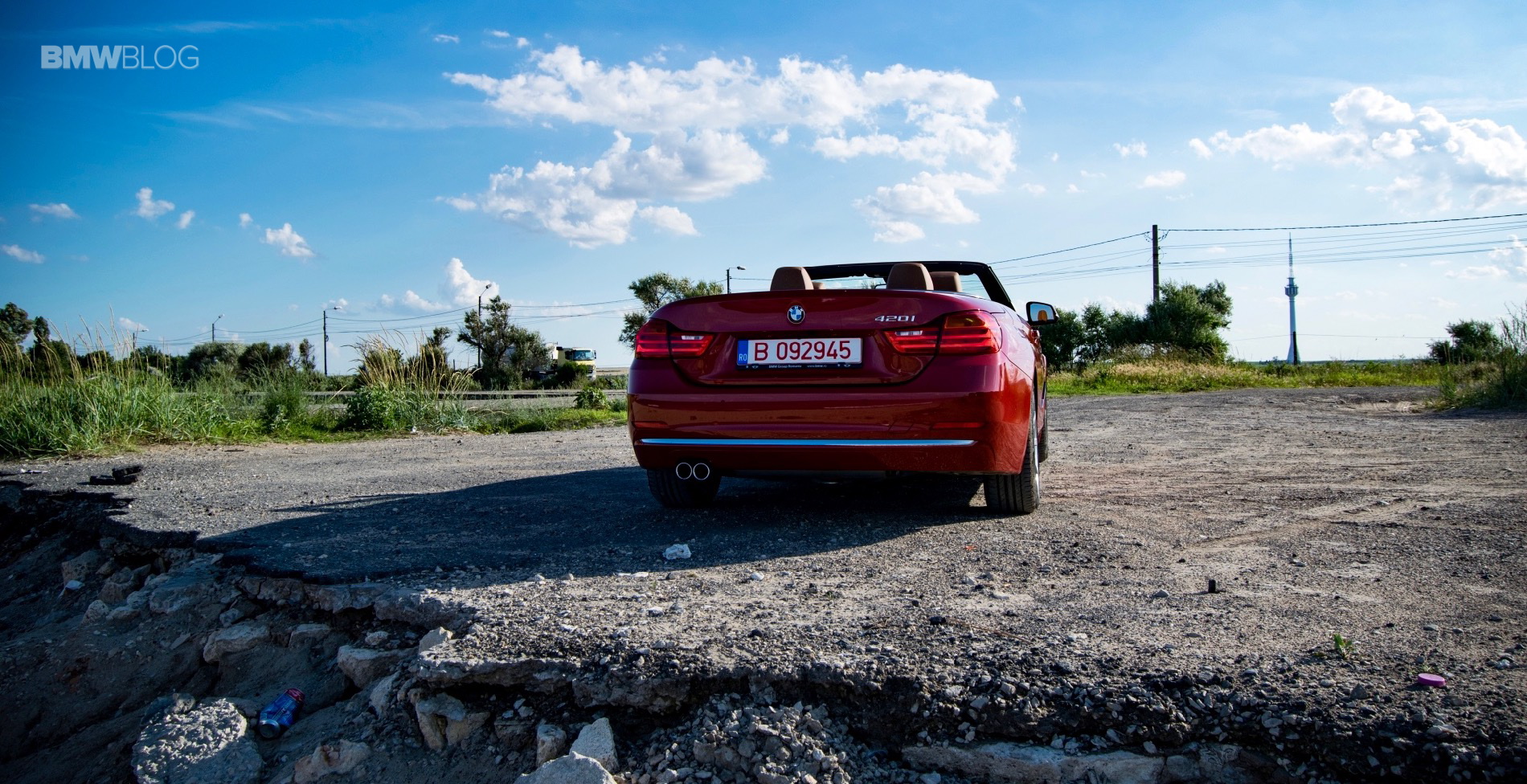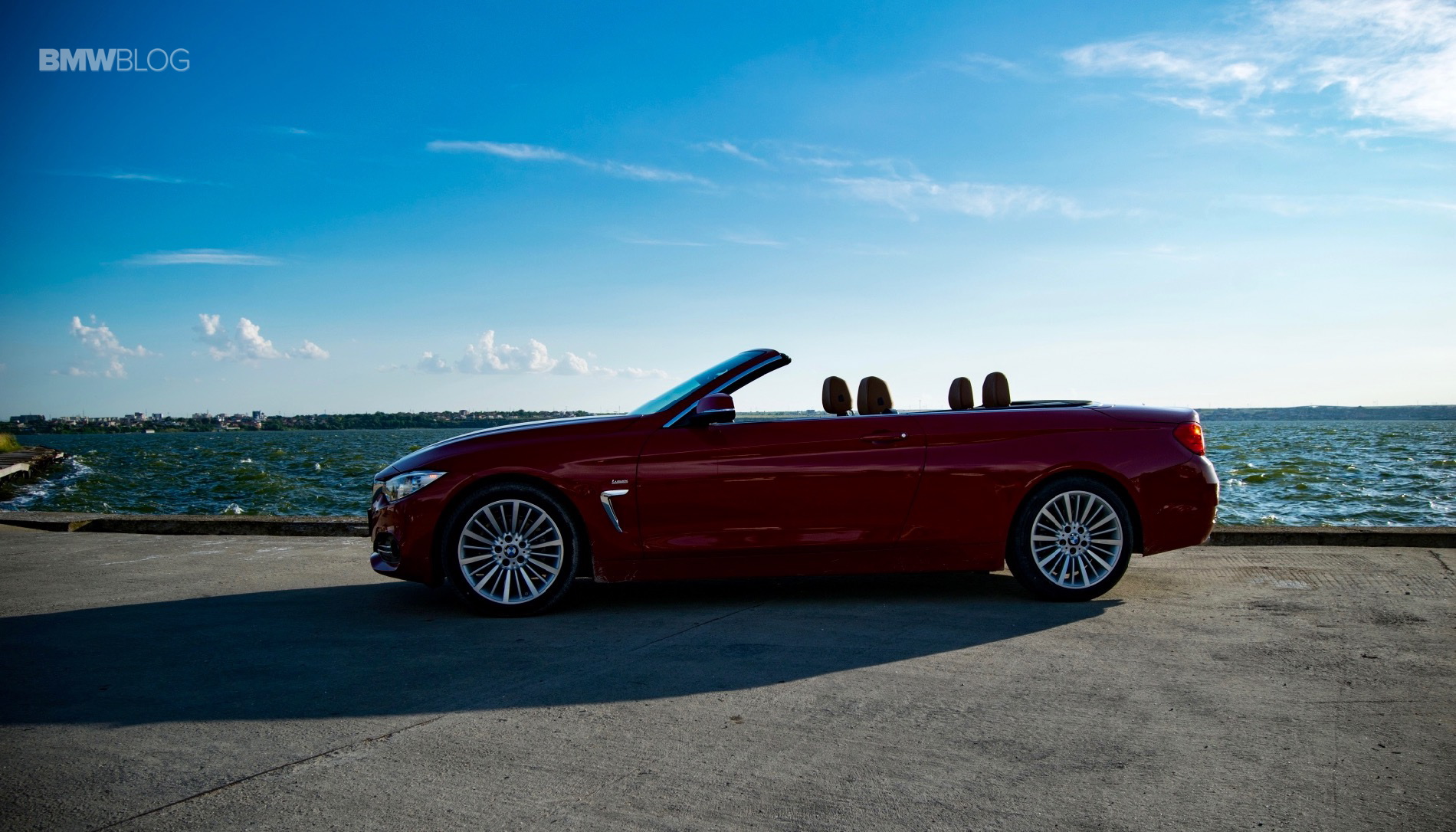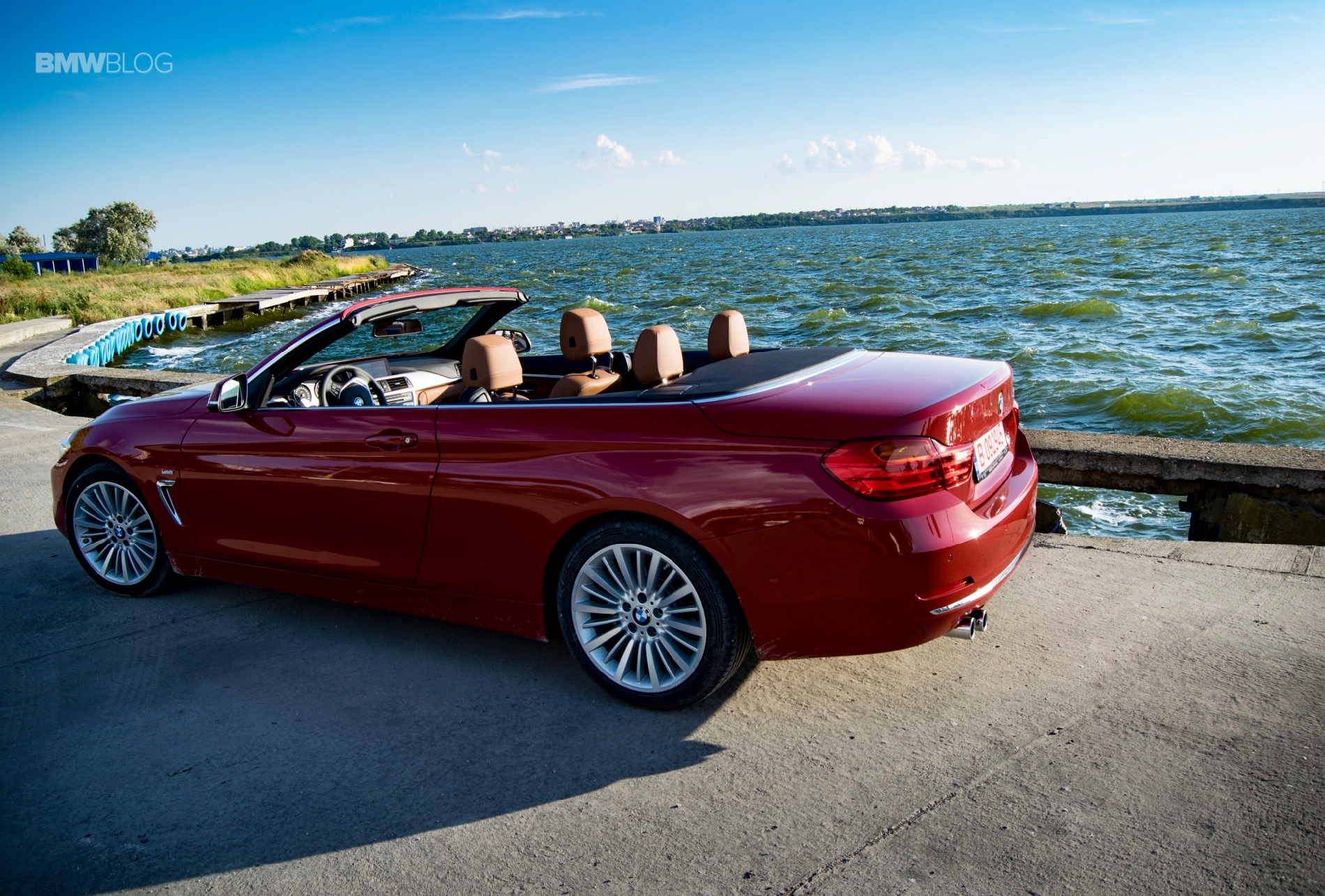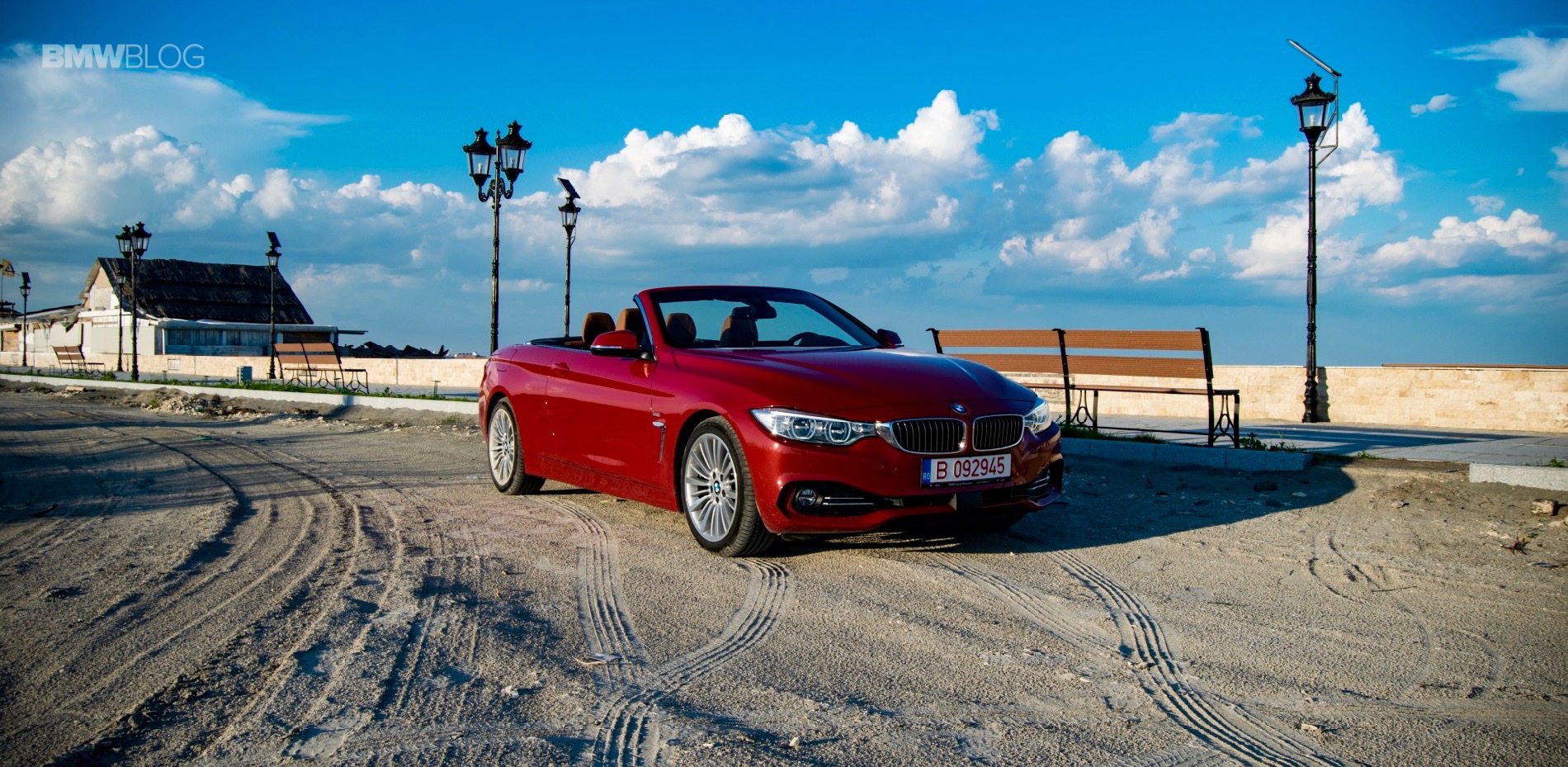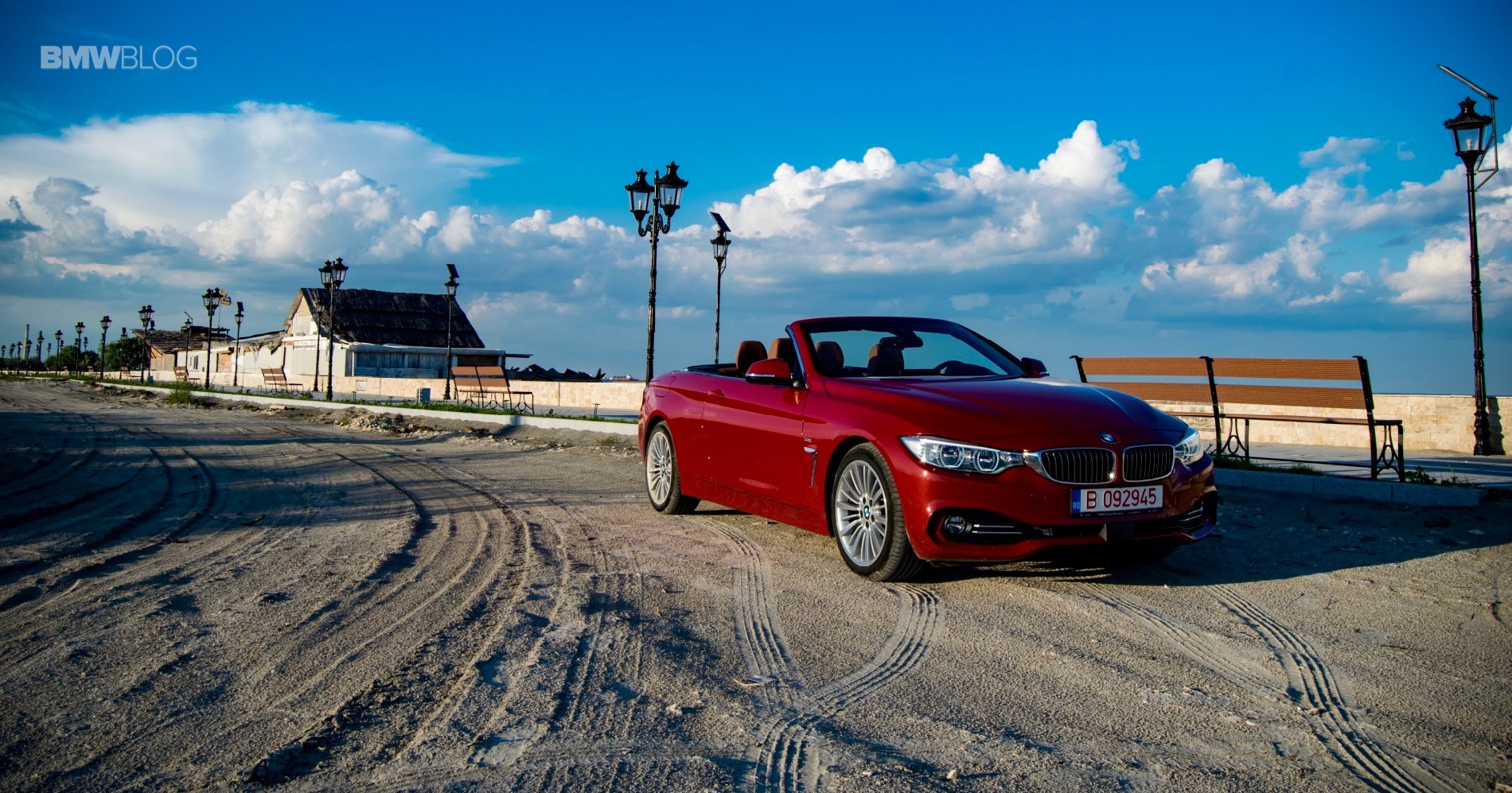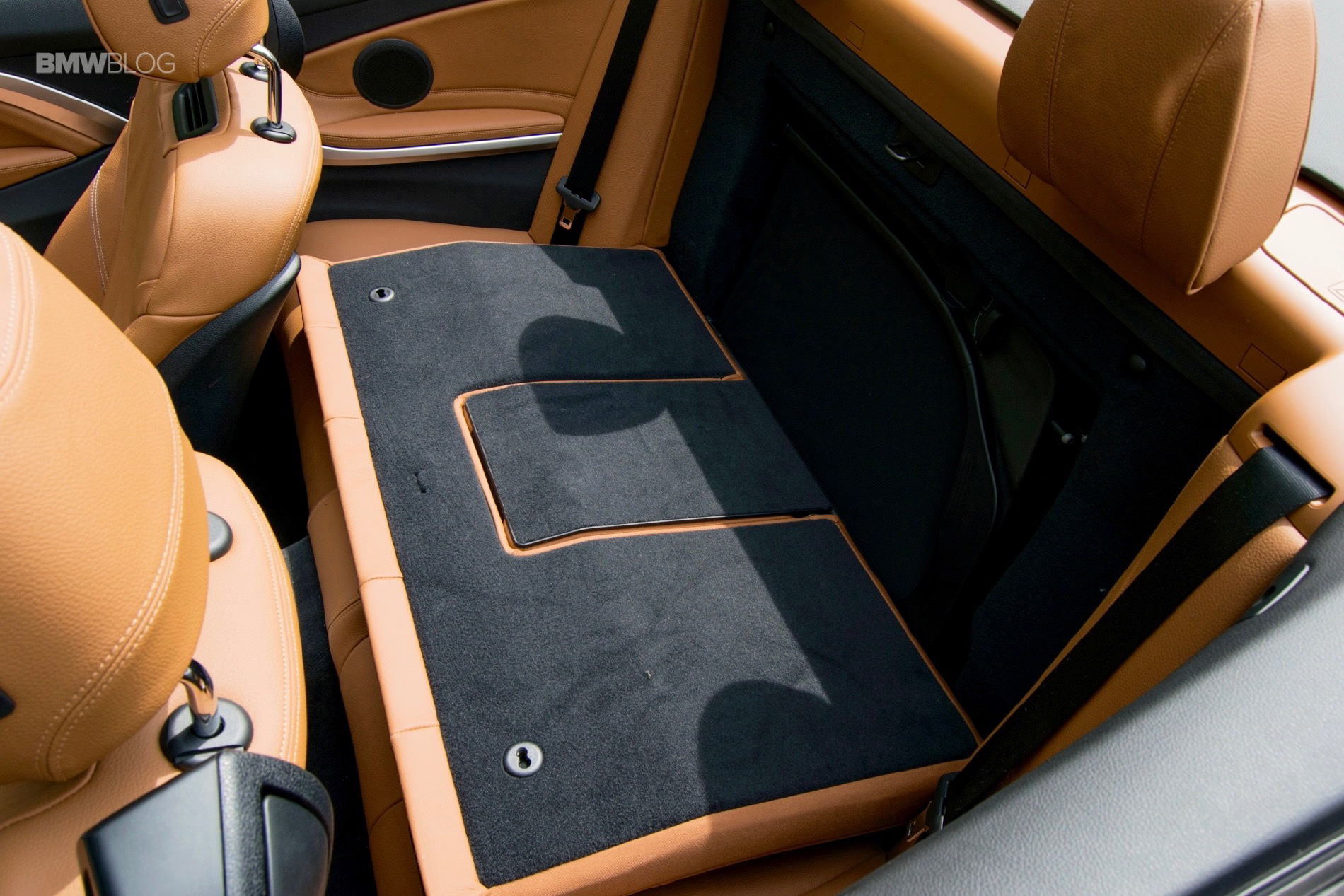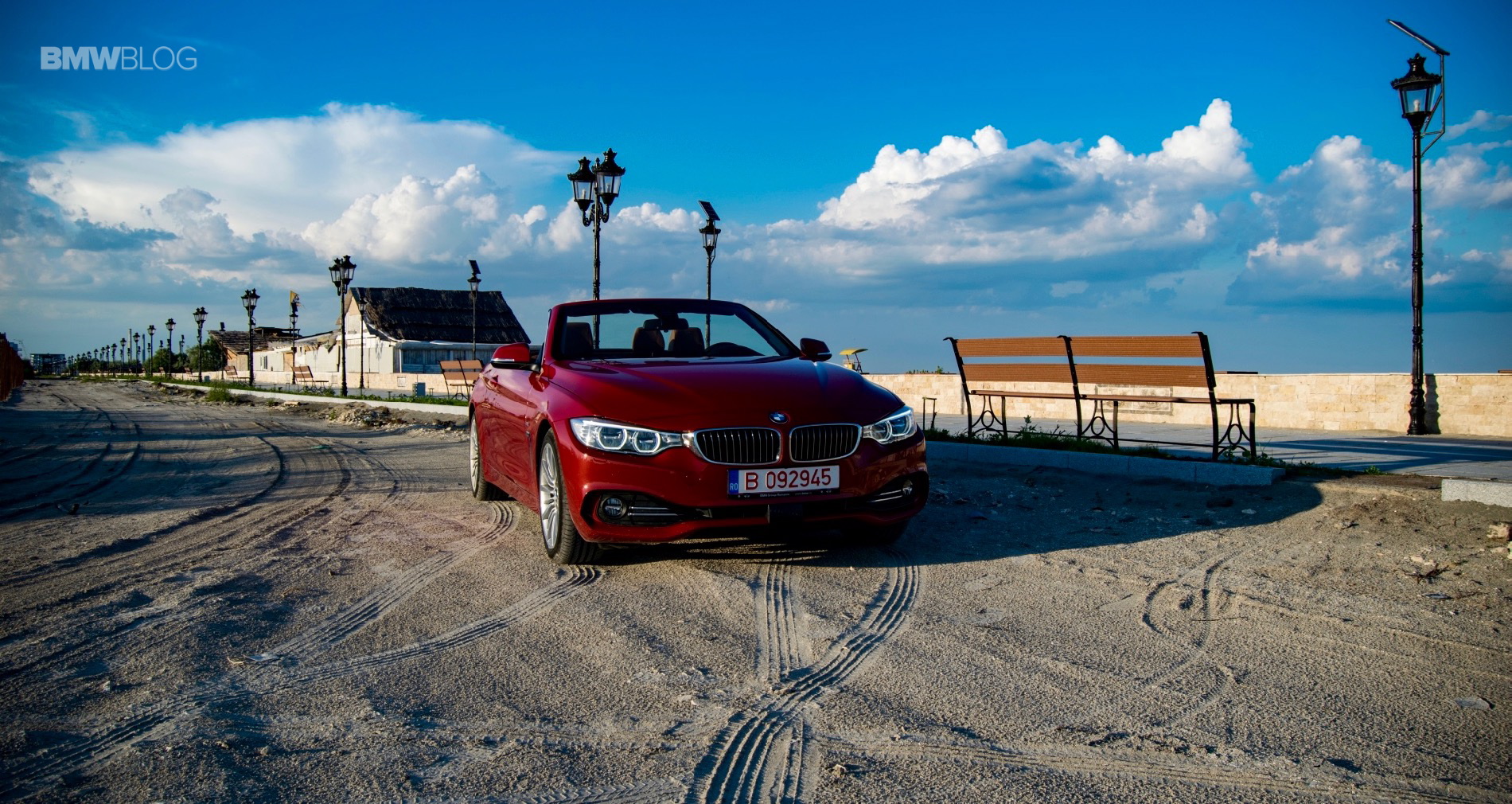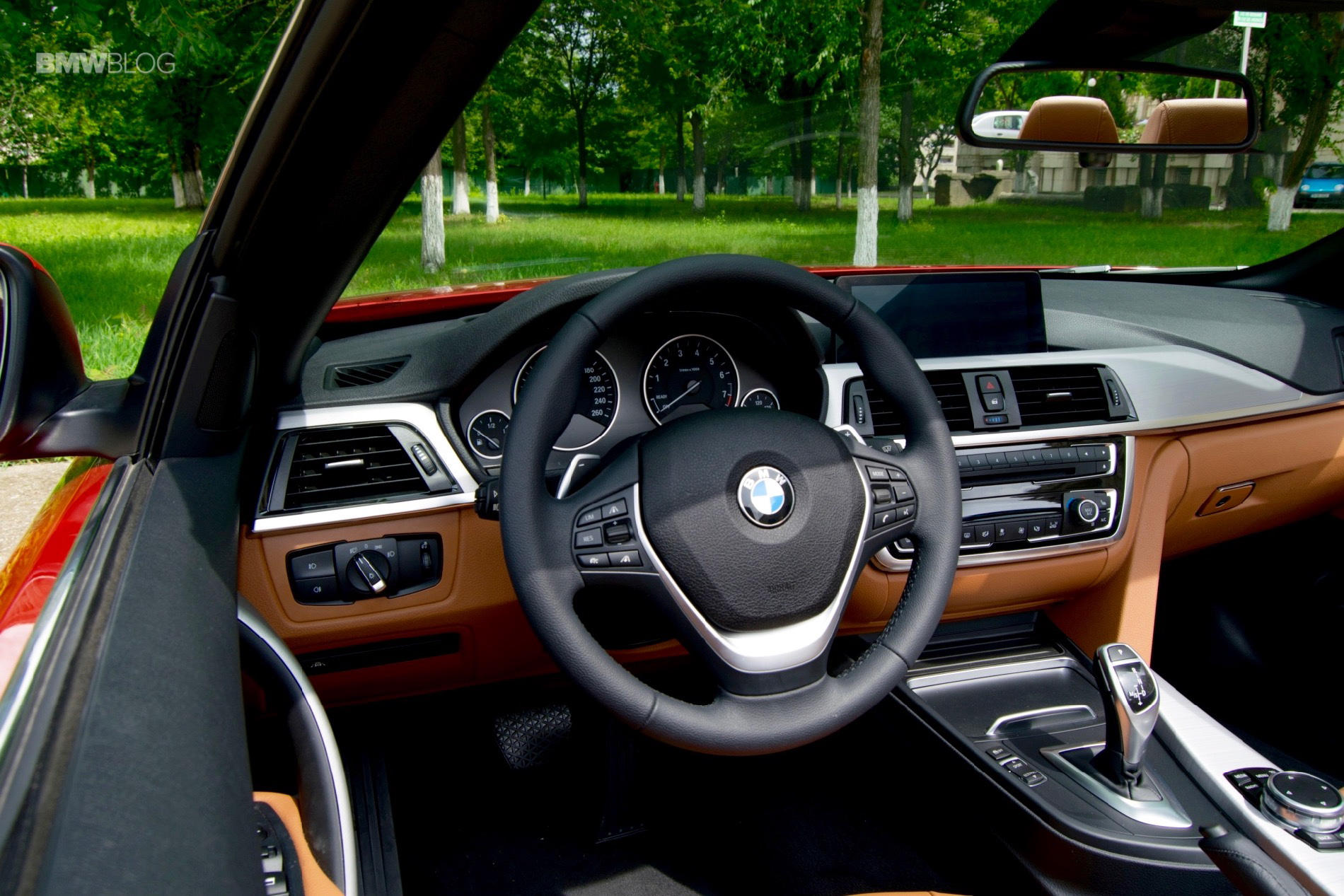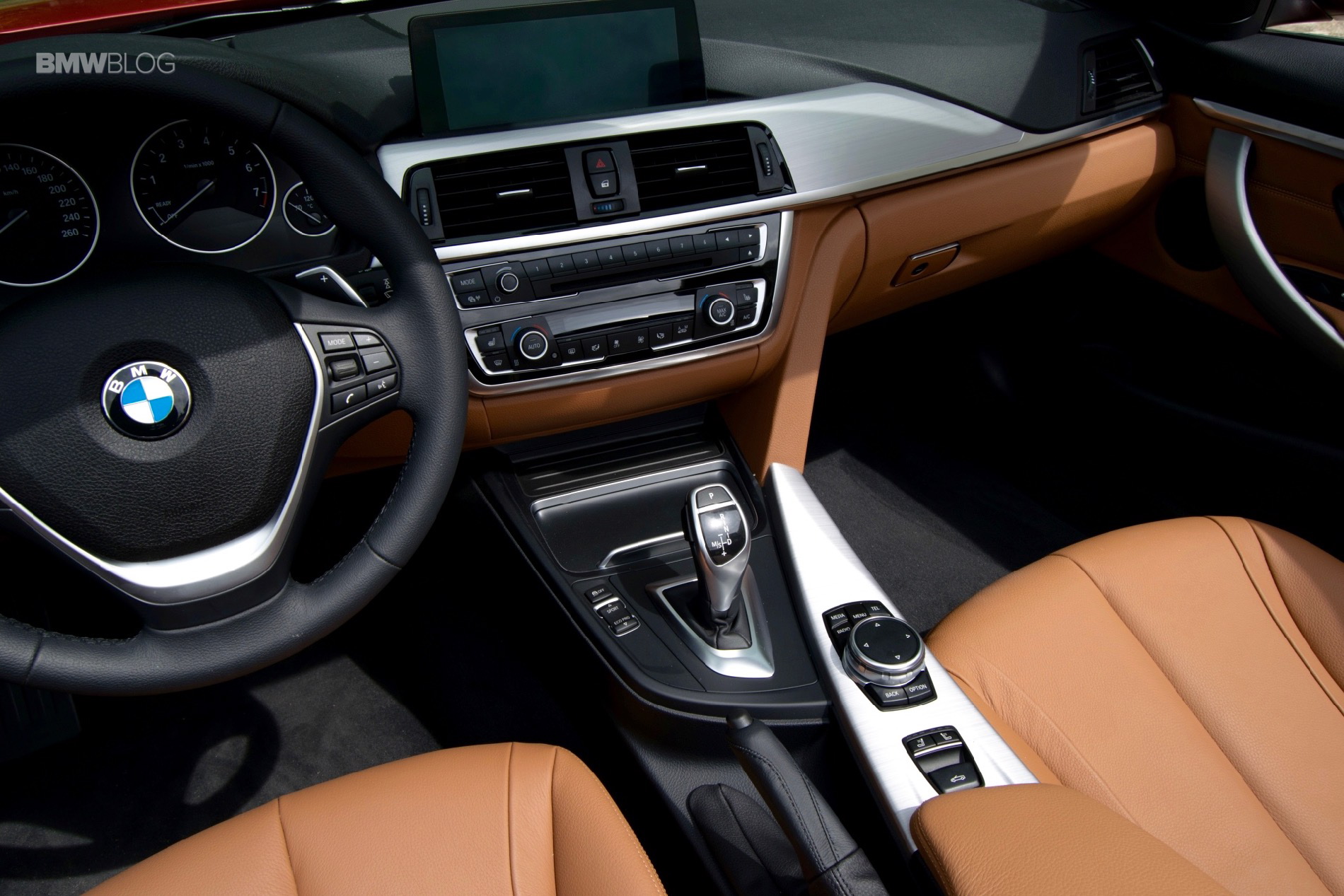When it launched two years ago, the BMW 4 Series Convertible was almost unchallenged it its segment where competitors, like the Audi A5 Cabriolet, were showing their age.
Today, the landscape has changed. We now have a new kid on the block – the Mercedes-Benz C-Class Cabrio – who looks the part and aims to challenge the status quo of the 4 Series Convertible. Admittedly, the three-pointed star model looks fresh and delivers a beautiful design, especially inside the cabin, but is that all there is to a convertible? We set out to find out.
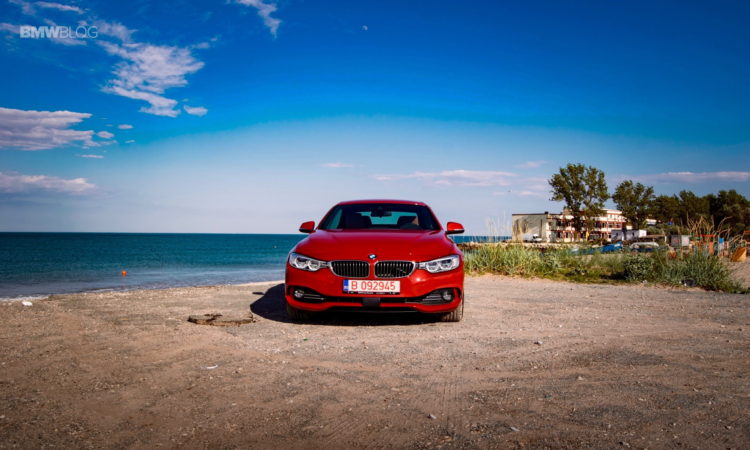
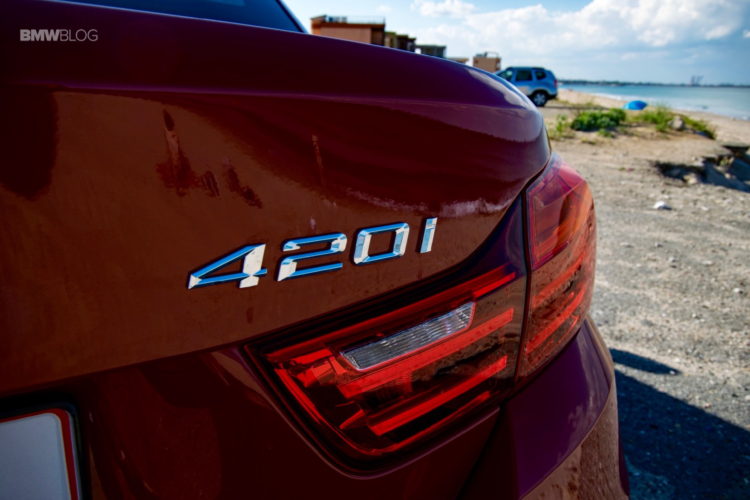
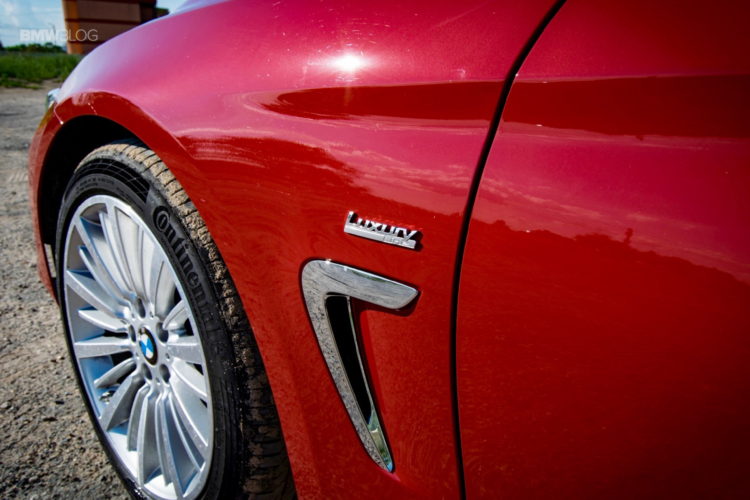
PHOTO GALLERY
The BMW 4 Series Convertible is the first of its kind, being launched back in 2014 as a replacement for the iconic BMW 3 Series Convertible, a model that had quite some history behind it. Having to fill some rather big shoes, the car was designed from the ground up alongside its fixed-roof brother, the 4 Series Coupe. Both of them are exactly the same size, with only one small difference in height, the droptop actually being taller by some 10 millimeters. Other than that, the wheelbase, tracks and length are exactly the same.
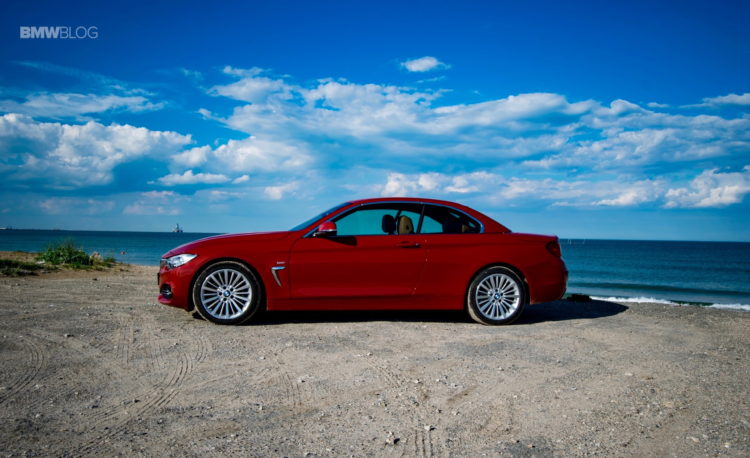
From distance, the two are so similar that you’d need to squint a little to set them apart. Everything from the waist down is identical but when looking at the retracting roof you notice that it is a bit narrower towards the rear, to be able to fit in the trunk. To some, that’s a turnoff but to my eyes, it felt… special.
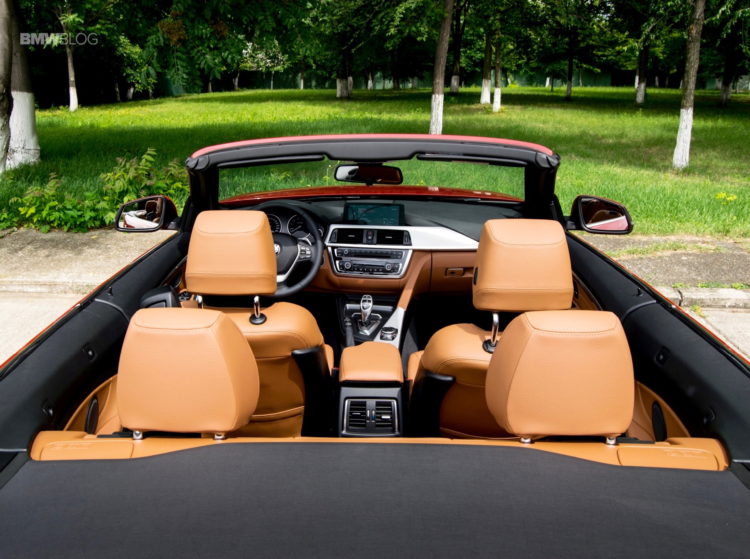
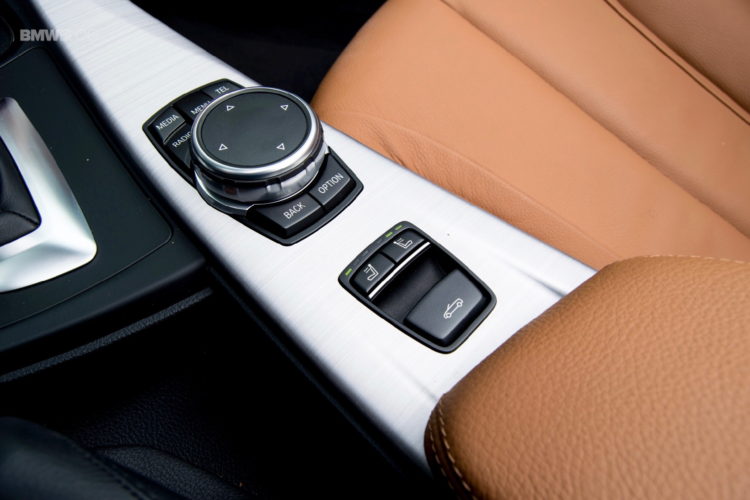
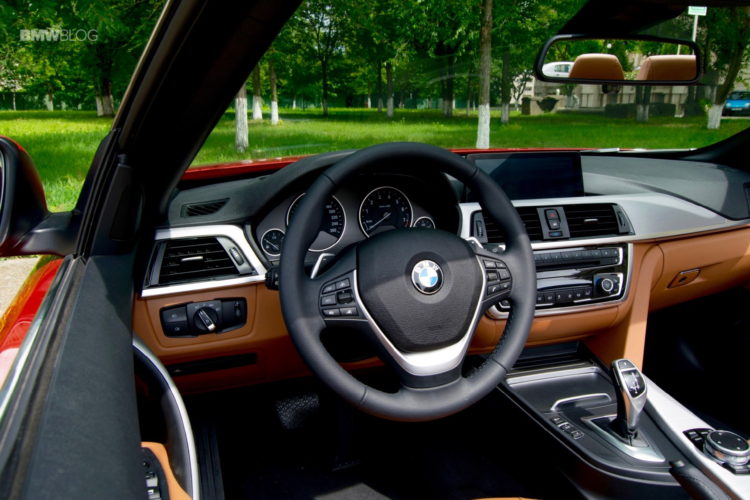
However, the Convertible stands out as soon as you jump in. The interior is also nearly identical to the Coupe, up to a button located right in front of the center armrest, a button that makes magic happen. BMW decided to keep the same hardtop on the 4 Series Convertible as it had on its predecessor and while this decision didn’t fare well with the weight of the car, it does have its advantages. Compared to the 6 Series Convertible I drove just before picking this car up, the hardtop of the 4 Series was noticeably better at keeping the sound out of the cabin and making the whole experience considerably more quiet.
[quote text_size=”small” align=”full”]
Inside the cabin you’re treated with the usual BMW design and materials. The fit and finish are of the premium assortment.
[/quote]
Alas, the difference is rather small and it may not justify the added weight of the mechanisms needed to raise and fold the roof. Chip in the fact that the extra rigidity of the hardtop might translate into various squeaks and creaks as time goes by and we reckon BMW should go for a soft-top on the next iteration.
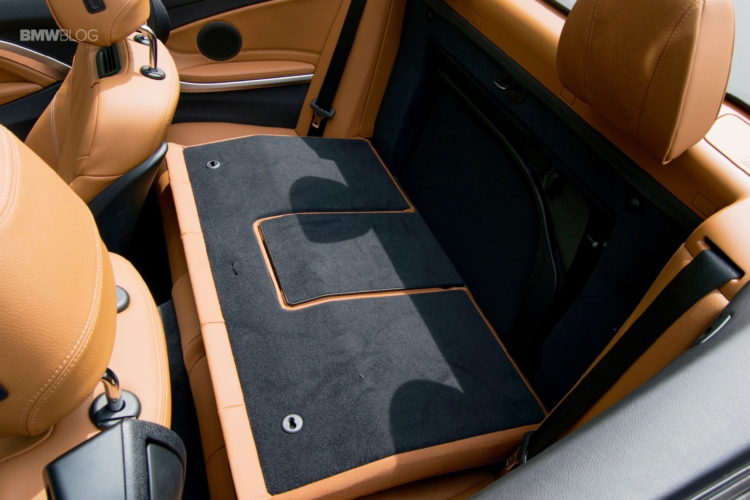
Dropping the roof into the boot creates a beautiful effect and if you decide to do this in traffic, you’d be getting a lot of wondering looks, even if the bystanders have seen such complicated mechanisms in action before. You’ll also be happy to know that you can operate the roof at speeds up to 20 km/h (13 mph) which is impressively quick compared to many other cabriolets on the market.
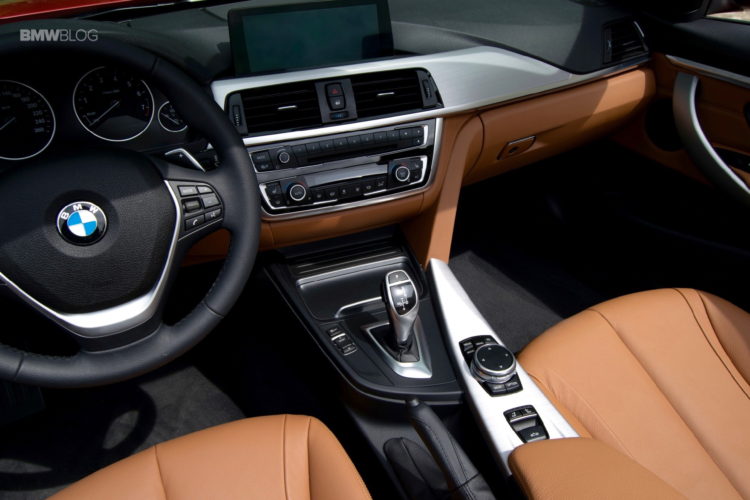
Inside the cabin you’re treated with the usual BMW design and materials. The fit and finish are of the premium assortment while the materials aren’t exactly on par with the 6 Series, but then again, neither are the prices for the two. The 4 Series is considerably smaller in exterior size than its bigger brother and yet, inside the cabin, we had the feeling that there was more room for passengers. Some of the space must’ve been saved by the narrower seats but even so, we were impressed with the fact that four adults can comfortably share the cabin. In retrospect, maybe the “comfortable” part isn’t exactly accurate, as the backs of the rear seats are a bit too upright and too harsh on the back, missing some indispensable padding. I guess that’s the price to pay if you want your roof to fit in the trunk.
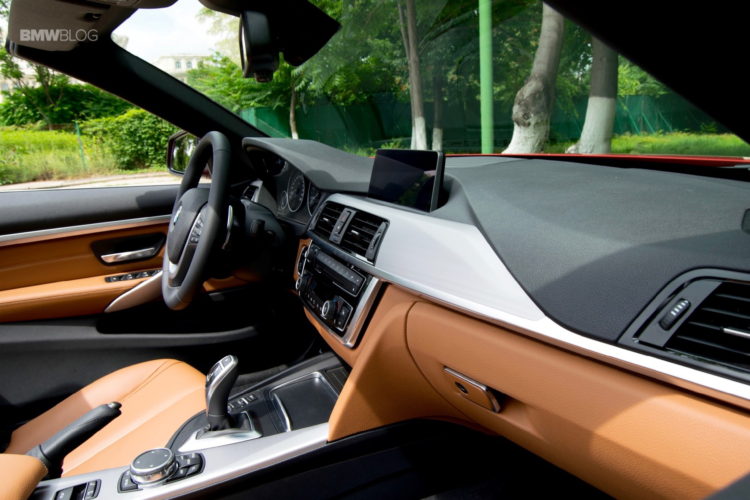
On the other hand, the interior may be spacious but it lacks the feeling you get inside the 6er. The leather dash alone makes a big difference whereas on the 4 Series trying to get it would be a futile exercise. Another advantage the 4er has are the optional neck warmers that are not available for the 6 Series at all. Other than that, things are roughly the same, even the wind deflector – that’s optional, by the way – being similar, using extremely old technology and rendering the rear seats unusable.
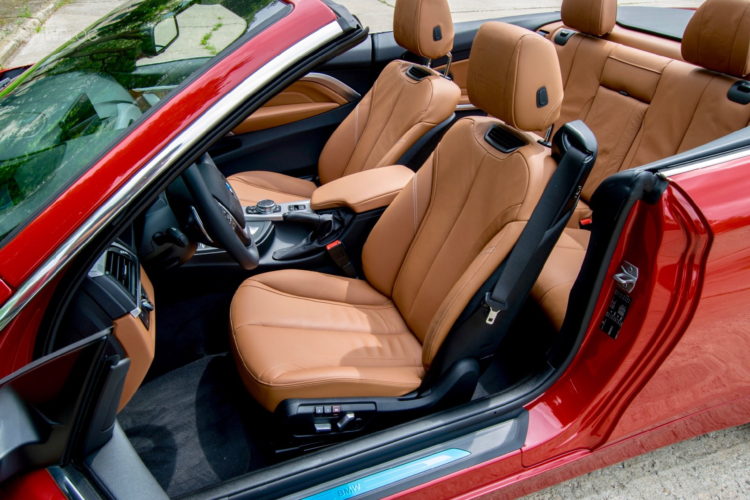
Speaking of which, getting in the back seat is rather an easy operation, especially with the roof down. You even get buttons on the sides of the front seats, allowing you to move the seats forward or backward from the back seats, depending on how long your legs are. Even with the roof up you’ll get plenty of space in the back unless your name is LeBron James. Unfortunately, longer trips will have an effect on your back as the padding on the seats is thin.
[quote text_size=”big” align=”full”]
Truth be told, when pushed, the 4 Series Convertible actually felt more planted that its Coupe brother.
[/quote]
Driving around town will make you forget about that and about how windy it gets inside the cabin. The speed limits will allow you to keep your hairdo intact since the speedometer readout will be under 80 km/h (50 mph) anyway, speeds at which the wind is not so disturbing that you’d need to use the deflector.
Get out on the highway though and things start to turn around. We were quite surprised to learn that you can actually go as fast as 130 km/h (81 mph) without being terribly disturbed by the wind blowing through your hair. That was with the windows up and the wind deflector raised, though. Without them, those with toupes better start holding on to them as soon as you near 100 km/h (62 mph).
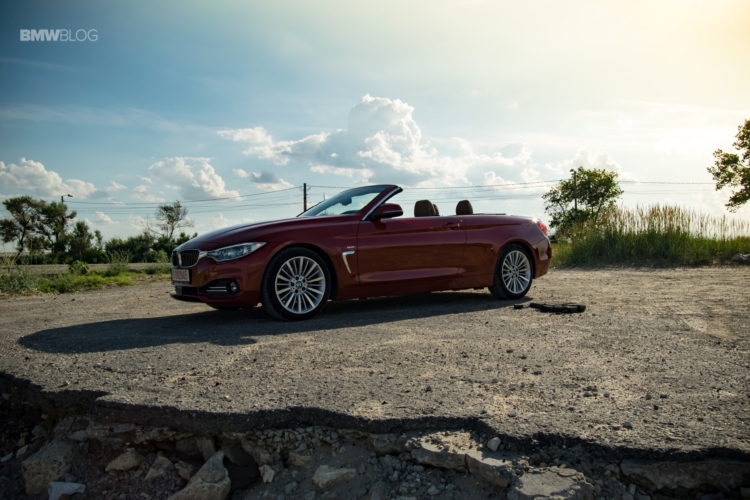
It was also outside the city limits where we found that this car a bit weird, if you will. We wanted to see just how big the discrepancy between riding with the roof up and with it folded is in terms of fuel consumption. On the same segment of a road, at an average speed of 110 km/h (75 mph) we noticed a difference on the MPG figures returned, but not in the way we expected. Allow me to explain.
Usually, droptops have worse MPG readings when riding with the roof down. That’s because the drag coefficient changes and forces you to use more momentum to get around. For example, on the 4 Series Convertible, the drag coefficient is 0.28 with the roof up (exactly the same as for the Coupe), going up to 0.33 with the roof down.
Nevertheless, we noticed that on our tester, with the roof up our fuel consumption was 5.8 l/100 km (40.5 mpg) while in the same conditions, but with the roof down, the reading said 5.4 l/100 km (43.5 mpg). Weird, I know but those are the figures we recorded. Around town, the 420i wasn’t nearly as efficient, showing a disappointing 12 l/100 km (19.6 mpg).
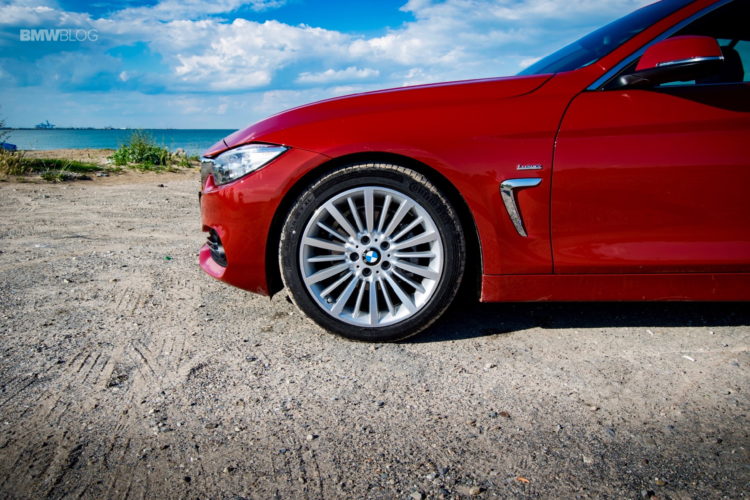
Even so, the car is rather enjoyable to drive. Our tester was the cheapest model you can buy in Europe, the 420i fitted with a 2-liter petrol 4-cylinder turbocharged engine good for 184 HP and 270 Nm (200 lb-ft) of torque. At first, it may seem like this won’t nearly be good enough for a car that tips the scale at 1,675 kg (3,693 lbs), but you’d be wrong.
As a matter of fact, the engine must be underrated by the Bavarians as it felt strong and powerful enough for any given situation. Truth be told, when pushed, the 4 Series Convertible actually felt more planted that its Coupe brother. Apparently, the engineers were so afraid that removing the roof will make the drop top wiggly that they went overboard with the chassis’ reinforcement. The end result is a rewarding experience behind the wheel.
[quote text_size=”medium” align=”full”]
In terms of competition, the 4 Series Convertible finds itself going up against the more stylish and luxurious C-Class which has just been launched
[/quote]
The rear end will slide even with this measly engine while the front end is fairly light due to all the extra weight in the back, especially when the roof is folded. So what you’d get is less understeer than you’d expect which, in turn, translates into a better driving experience behind the wheel. If only the steering would offer a bit more feedback. Even in Sport mode not much changes in terms of feel, other than making turning the wheel a lot harder on your arms.
However, the entire experience can be rewarding overall. Sure, it won’t be on par with the M4 Convertible but it is decent nonetheless at a fraction of its price. Even the engine sounds good in Sport mode, with occasional burbles on upshifts, just enough to get you going.
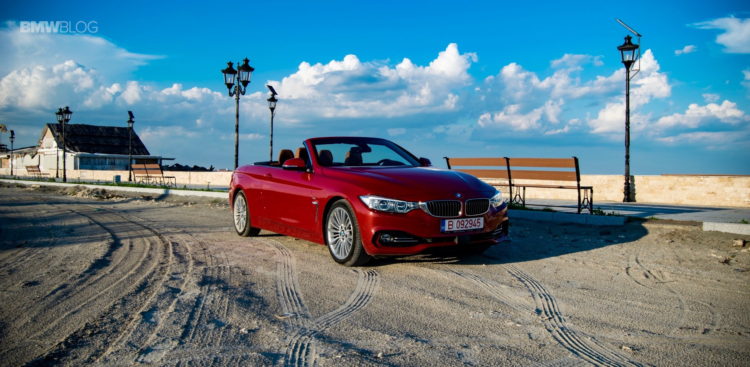
You can also use the 4 Series Convertible as a grand tourer. Sure, the master at this craft will be the 6 Series Gran Coupe but if you’re looking for something a bit smaller and cheaper, the 4er is right there. Alas, in this case you’ll be hitting some bottlenecks that are present on every droptop model.
First of all, the boot space is modest, to say the least. In total you get 20 extra liters of space compared to its predecessor, but only the engineers who designed the boot could tell you where they are and if they are actually usable. Overall, you need to rely on 370 liters (13 cubic feet) of space and accessing them isn’t easy.
To help out, BMW fitted this car with a lift button that raises the complicated mechanisms used for the roof, allowing you to access the luggage easier. However, you still have to make sure that they fit in there once the mechanical bits are pulled down again to close the boot lid. Tricky business.
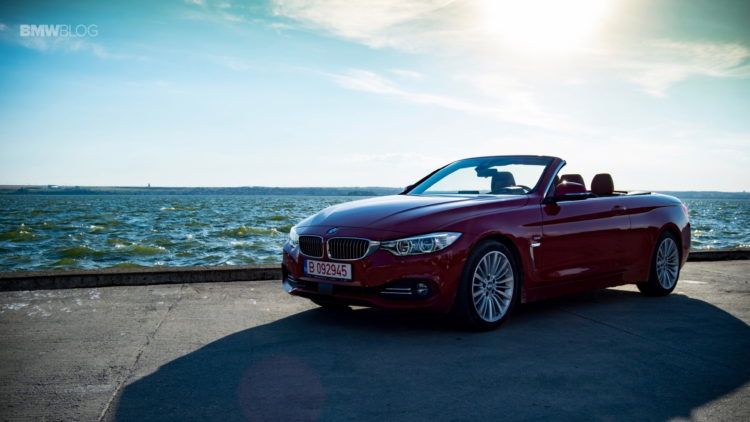
Even so, the 420i Convertible we tested was a blast. Sure, driving it with the top down was only possible in the morning and evening as the hot summer sun turned everything inside the cabin into a hot plate during the day, yet during those essential hours when you could drive with the top down, the experience was serene.
In terms of competition, the 4 Series Convertible finds itself going up against the more stylish and luxurious C-Class which has just been launched. Truth be told, the Merc wins the battle in terms of design both in and out, but in terms of dynamics, we’re not so sure. Therefore, all you really need to ask yourself is: what matters most?
As for the Audi A5 we can’t really include it in this league as it is getting old rather fast and is about to be replaced. Come to think of it, the droptop 4er is also due for a refresh next year so you might want to hold off on making up your mind on buying one until then.
If you do want to go ahead and take this leap, you can rest assured that you won’t be disappointed, not even if you go for the entry-level 420i as it will prove to be a trustworthy companion on your trips putting a smile on your face on twisty roads.


